Rifat Ara Islam
Architecture for Resilient and Sustainable Communities
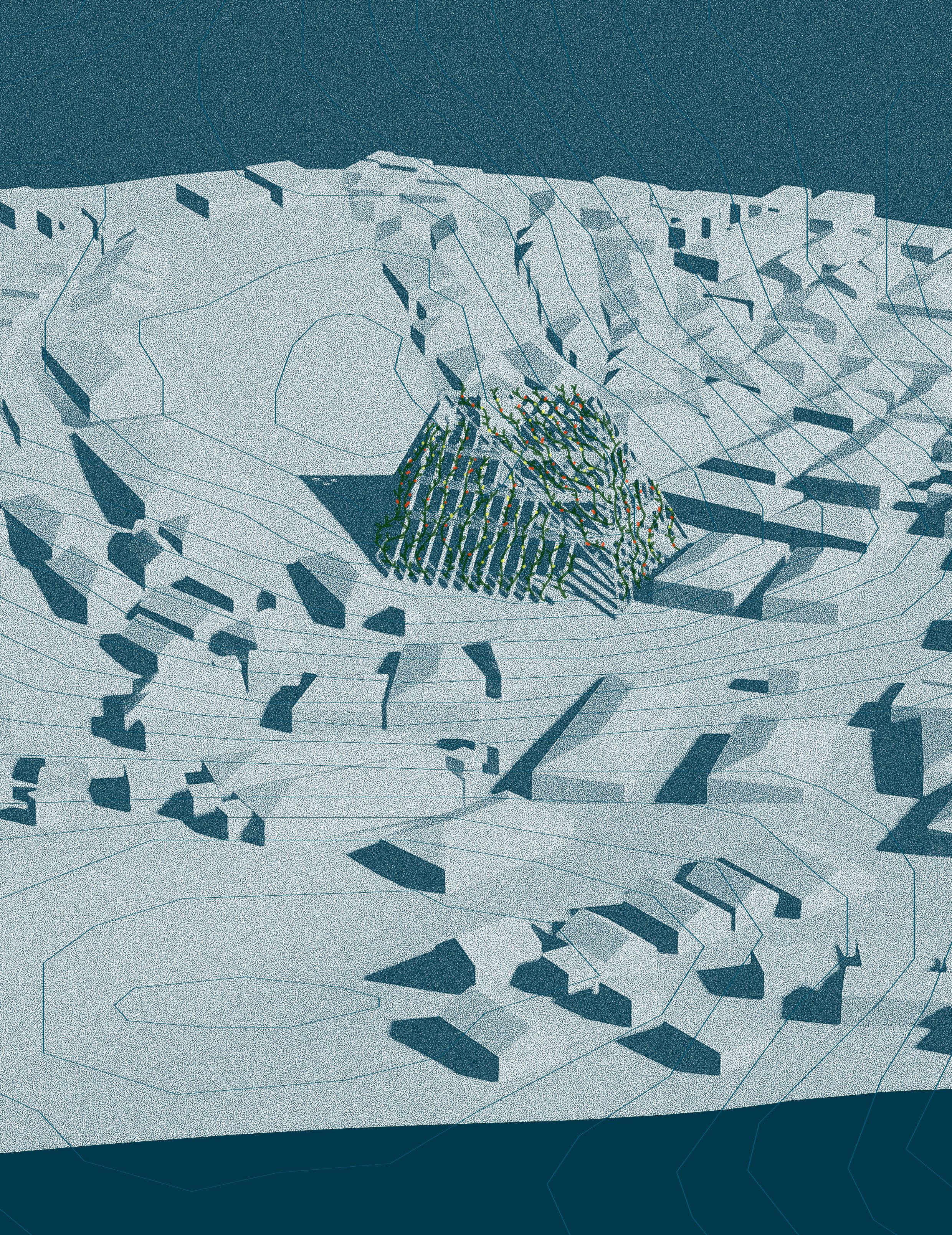
DeBoer Agritourism Barn
Location: Hamilton, ON, Canada
Supervisor: Krista Hulshof, Principal at VELD Architect Inc.
Scale: 374 m2 | Budget: $2,000,000
Completion: 2027
Typology: Hospitality | Occupancy: Assembly Design Concept: Adaptive re-use
Phases: SD, DD, CD - Permit Documentation & AHJ Coordination
Media: Zoho, MS office, Revit 2025
Goals & Methodology:
The project aimed to transform an existing agricultural property into a multi-phase agritourism facility while meeting zoning, and environmental requirements. I coordinated with AHJs during the schematic design and construction documentation phases to support zoning clearance, building permit submission, and compliance with the Ontario Building Code and local regulations. Under the supervision of the principal architect, I managed project tracking tools and maintained ongoing communication with the client and consultants. I was responsible for organizing and integrating consultant reports—including traffic, noise, civil, archaeological, and environmental studies—ensuring they aligned with project timelines and

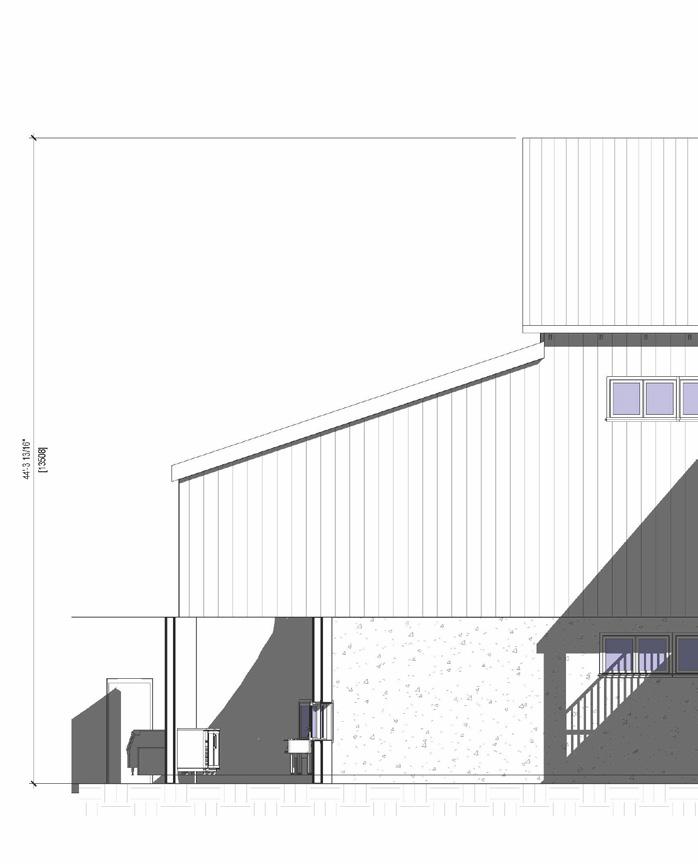
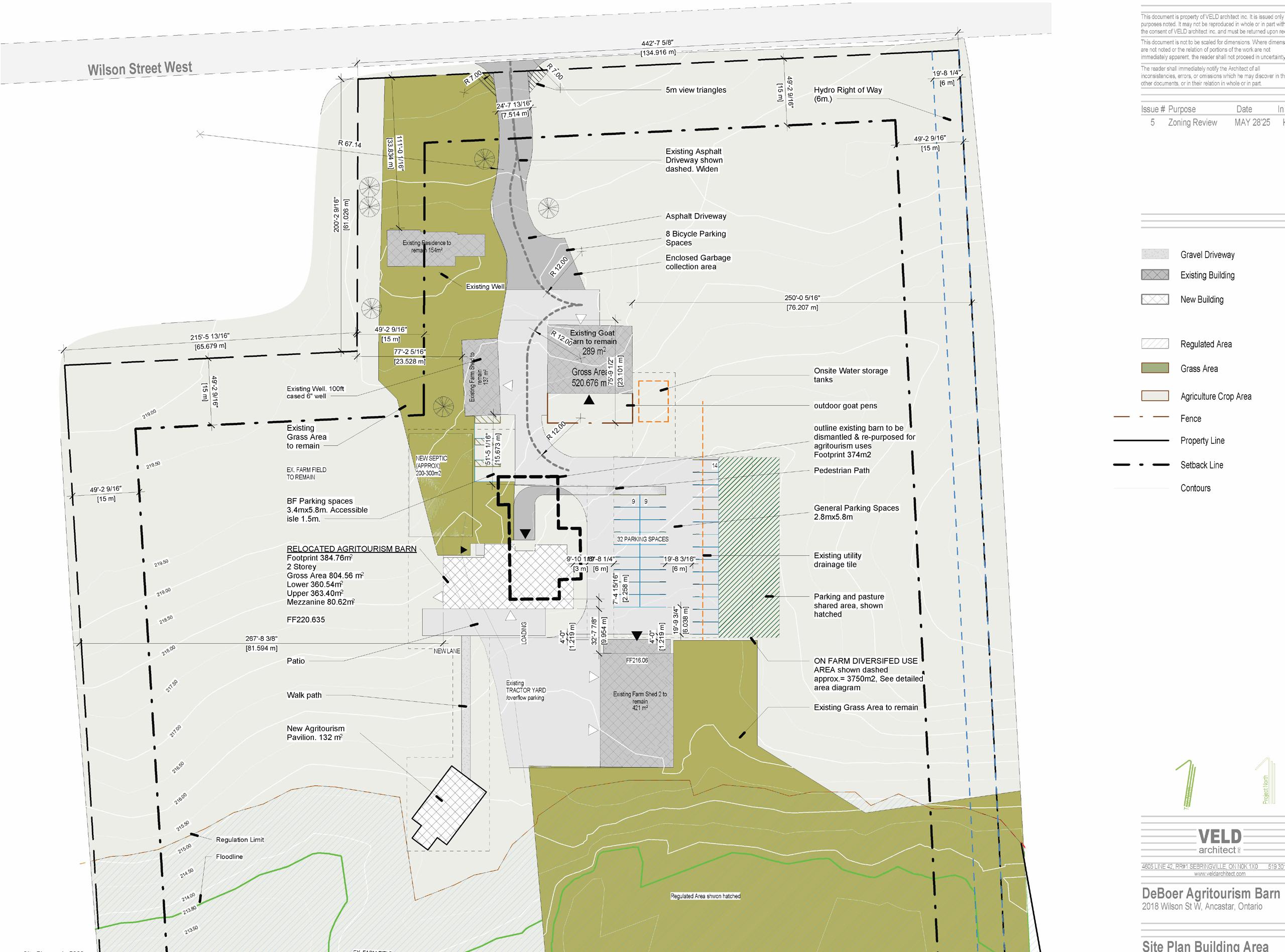
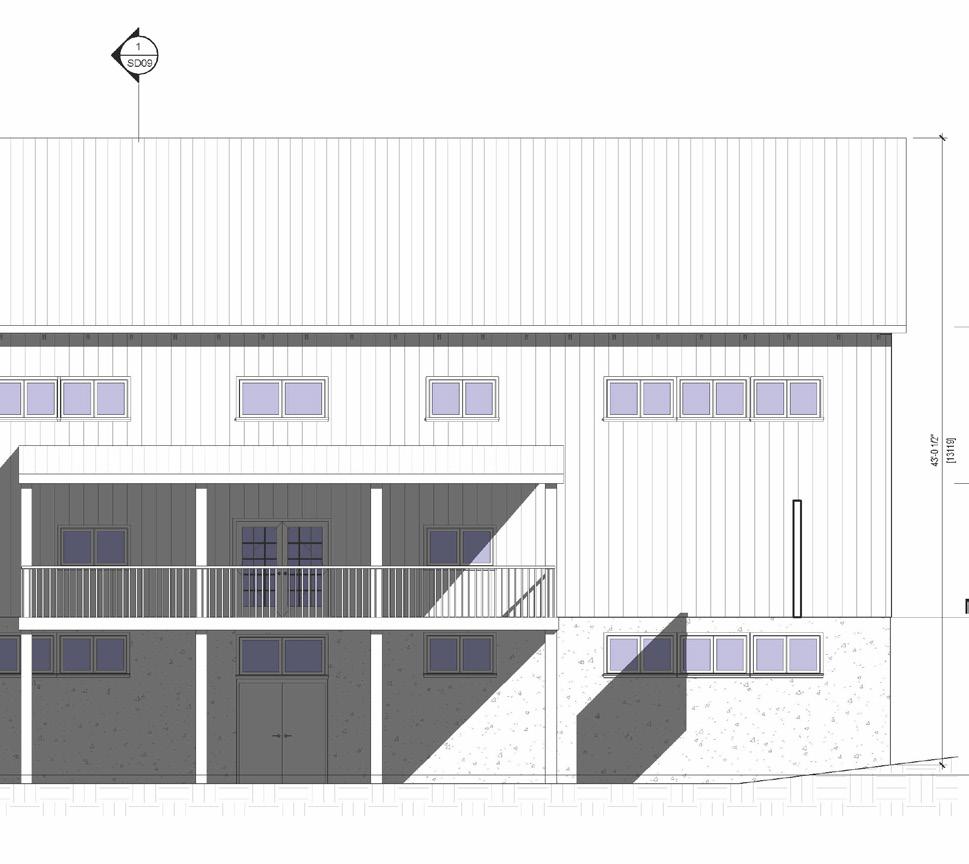
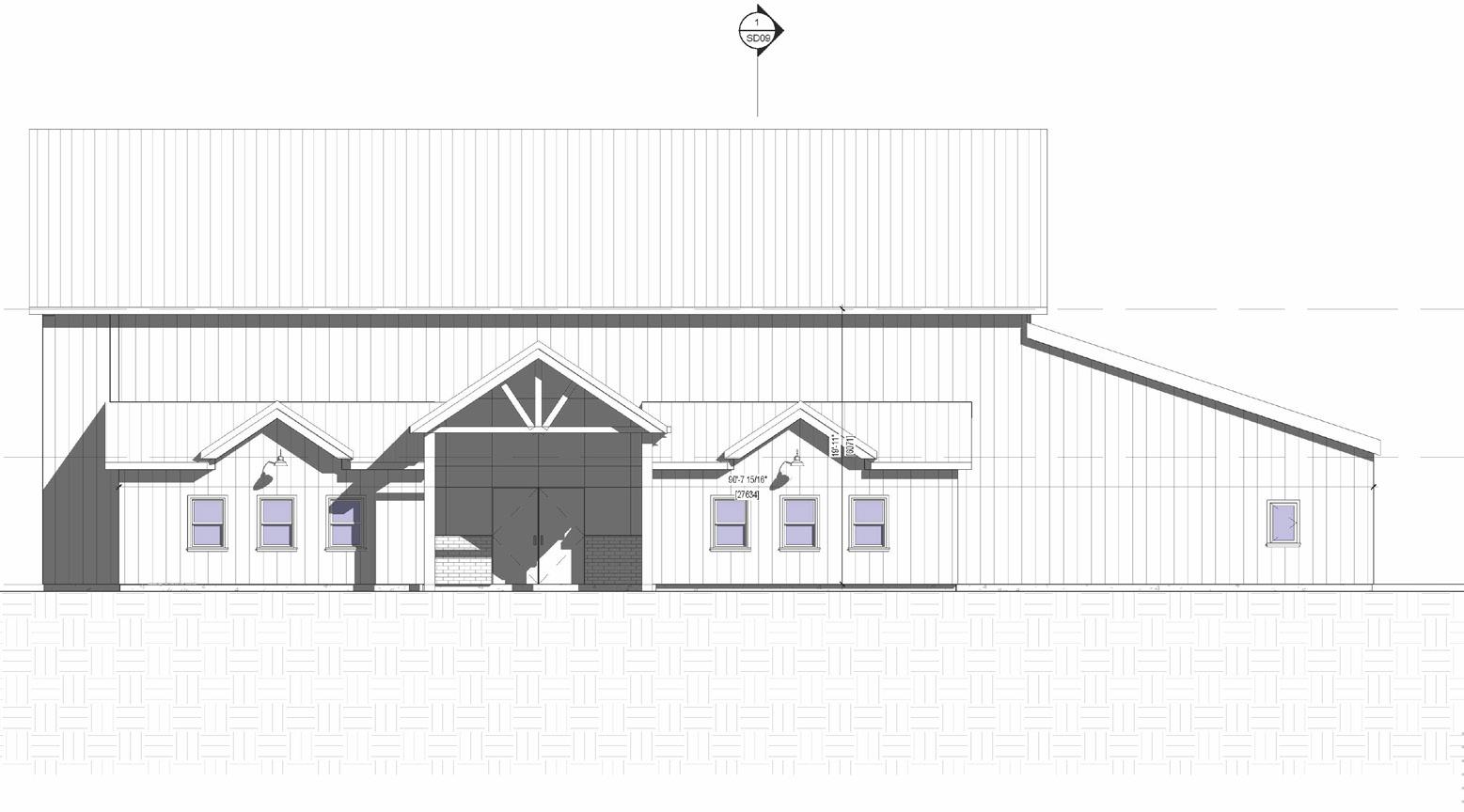
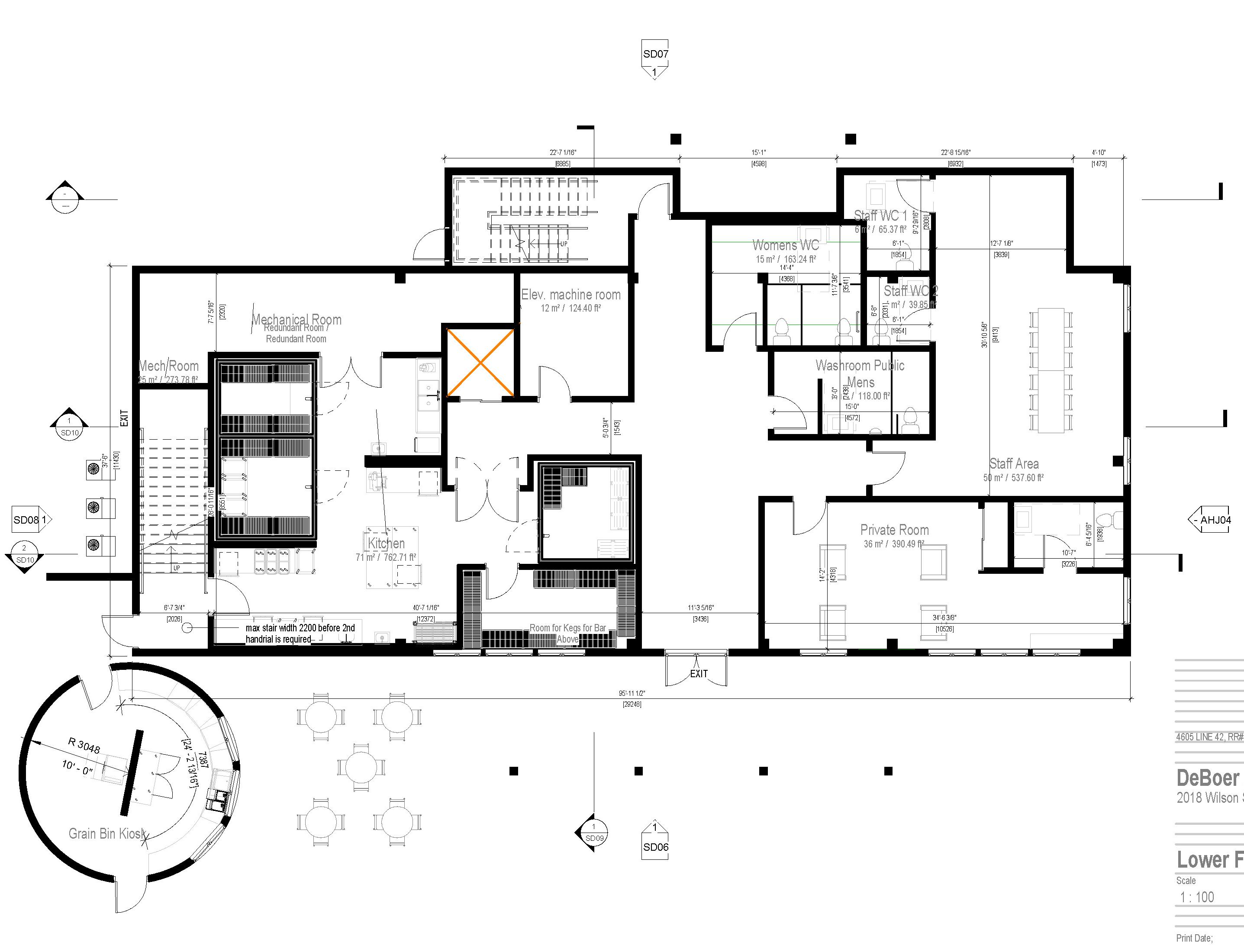

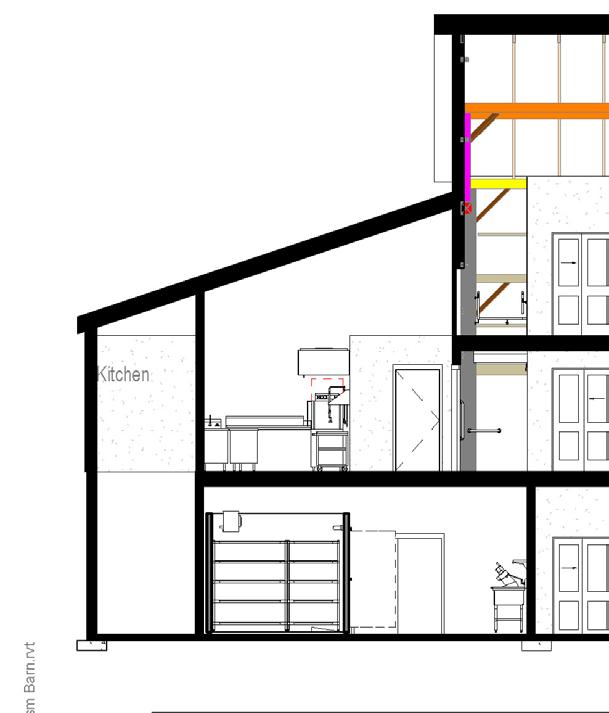
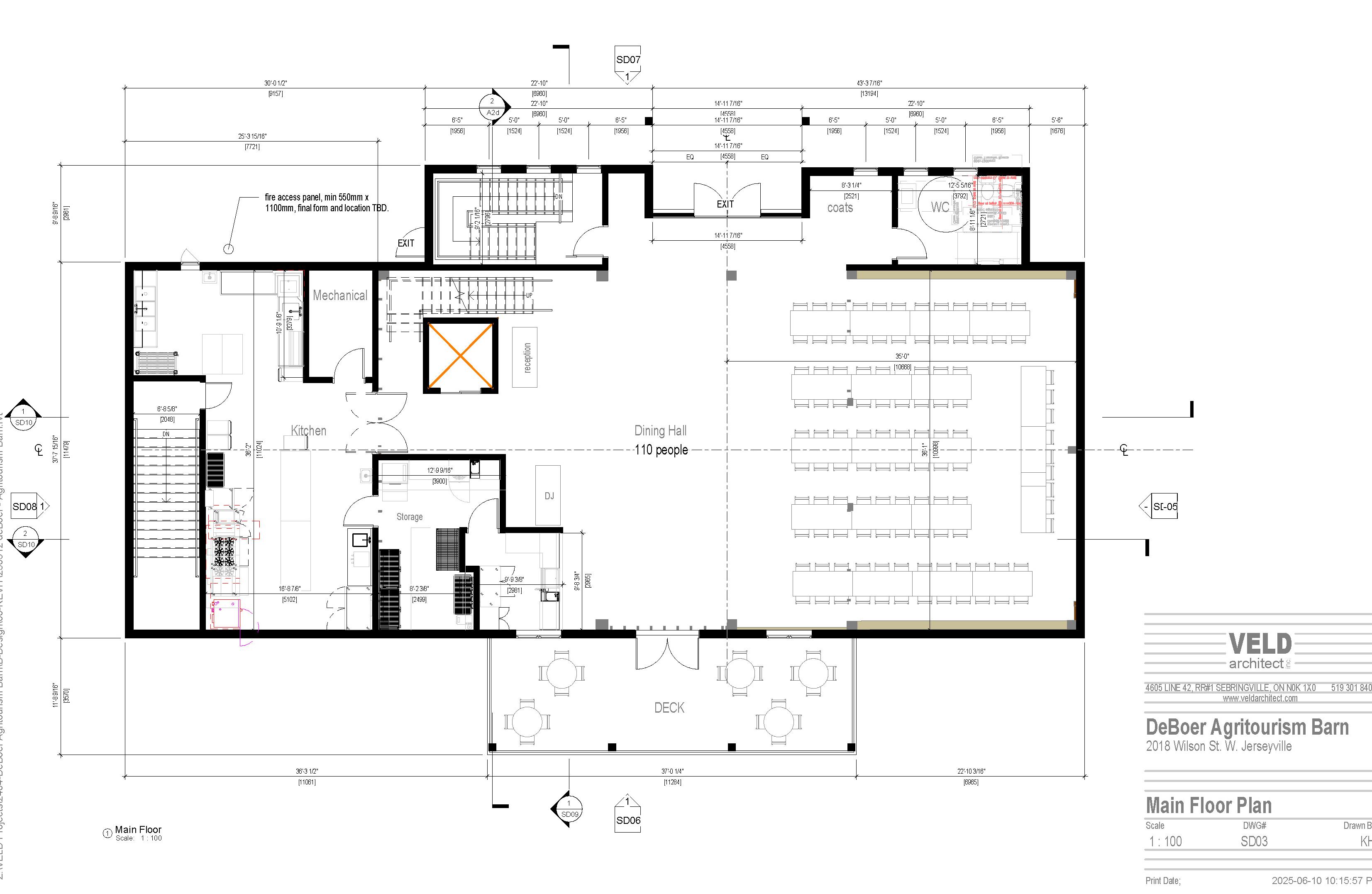
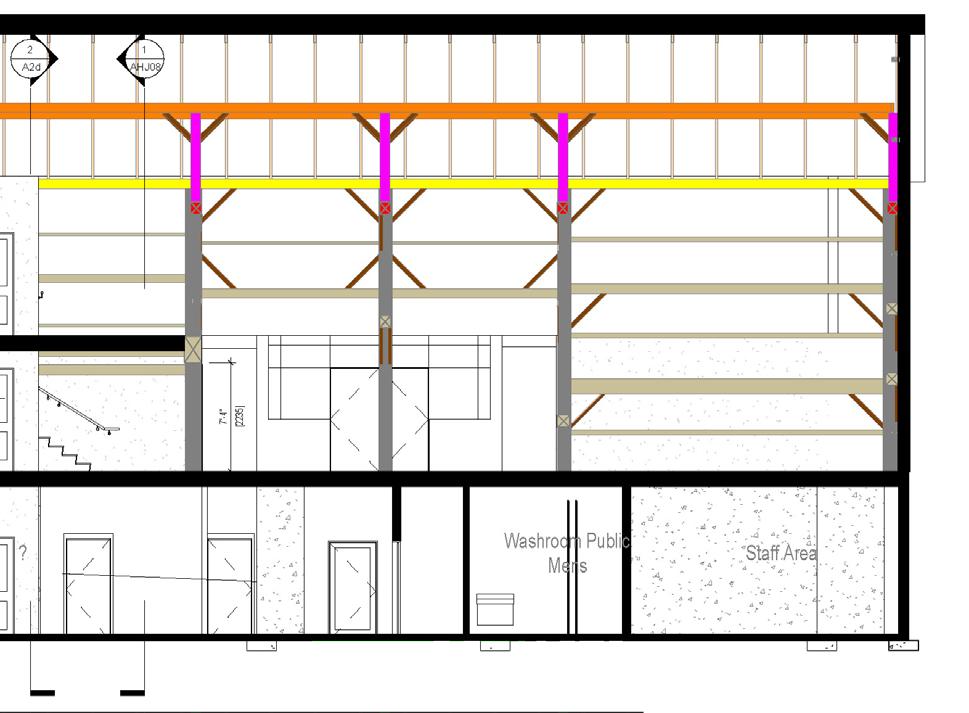
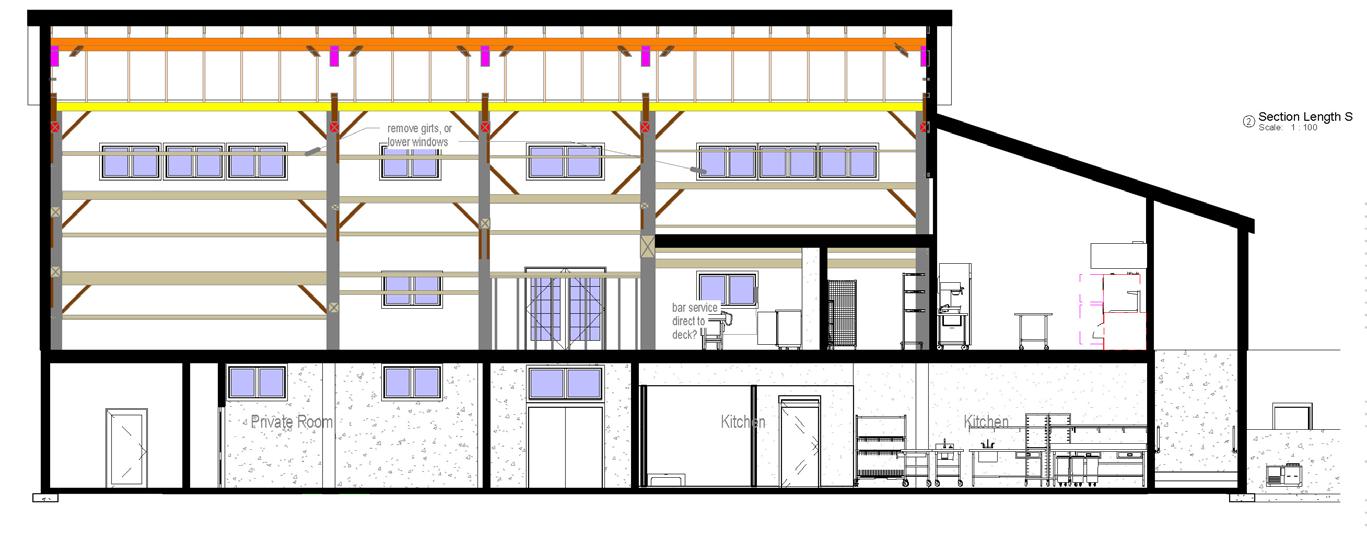
Gemmill Log Cabin
Location: Goderich, ON, Canada
Supervisor: Krista Hulshof, Principal at VELD Architect Inc.
Scale: 126 m2 | Budget: $500,000
Completion: 2026
Typology: Heritage Retreat | Occupancy: Residential Design Concept: Adaptive re-use
Phases: PD, SD, DD - Design Options
Media: Zoho, MS office, Revit 2025
Goals & Methodology:
The project involves the sensitive relocation and renovation of an early 1800s heritage log cabin on a Lake Huron property facing significant shoreline erosion. The goal is to adapt the existing structure for agingin-place retirement living, while maintaining its historical character and complying with conservation and zoning constraints. I contributed to the schematic design phase by exploring multiple design layout options that respond to the cabin’s original footprint, structural limitations, and site erosion setbacks. Under the supervision of the principal architect, I developed Revit models and visualizations to support decision-making and coordination with the client and consultants.
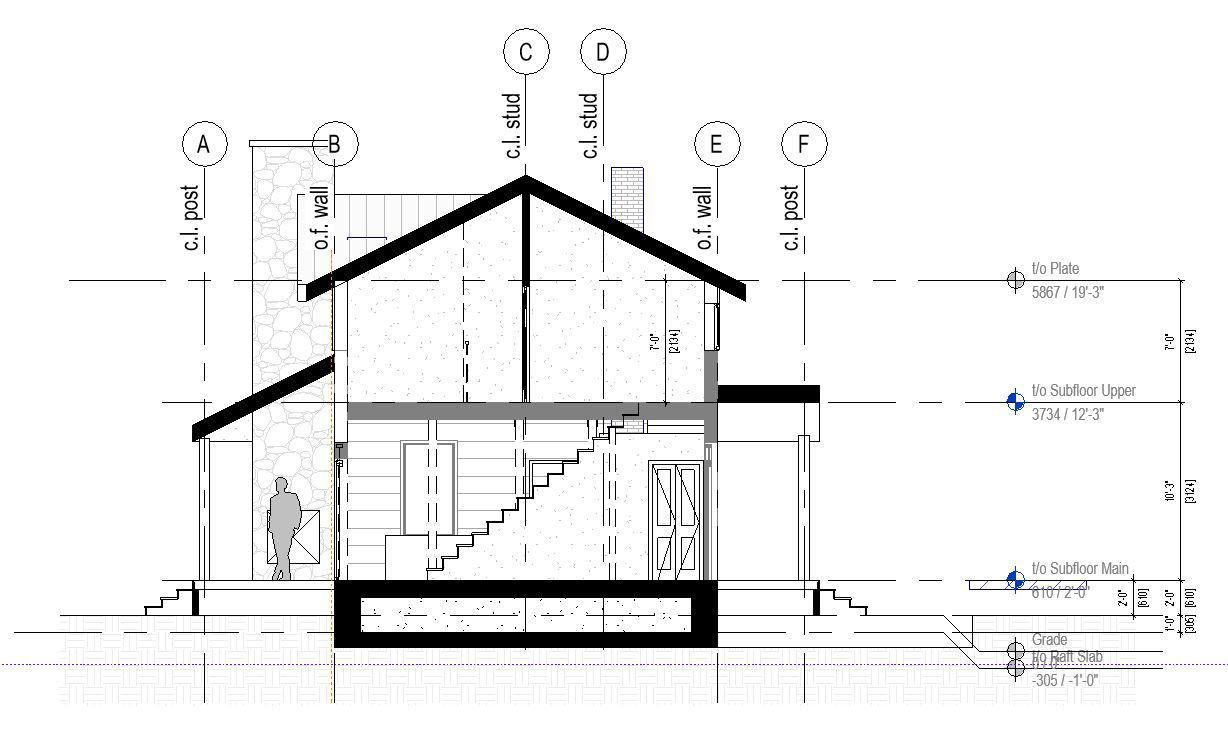
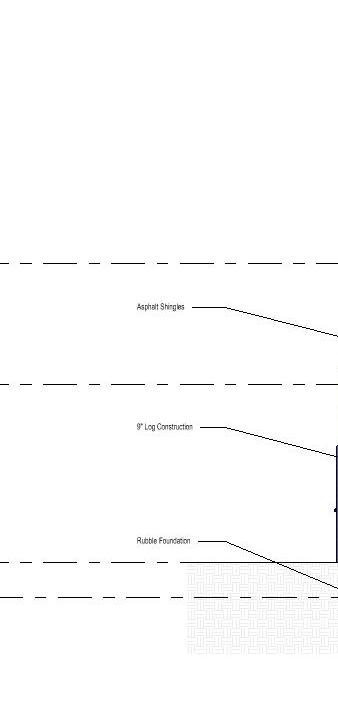
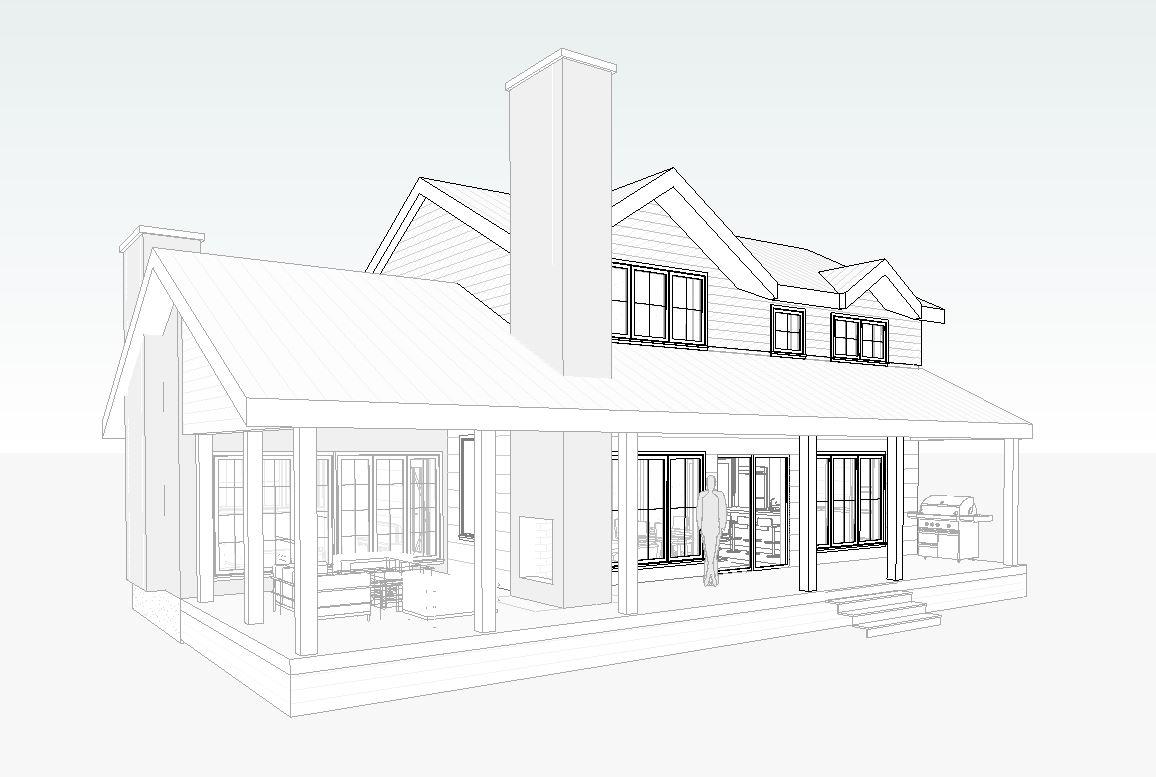
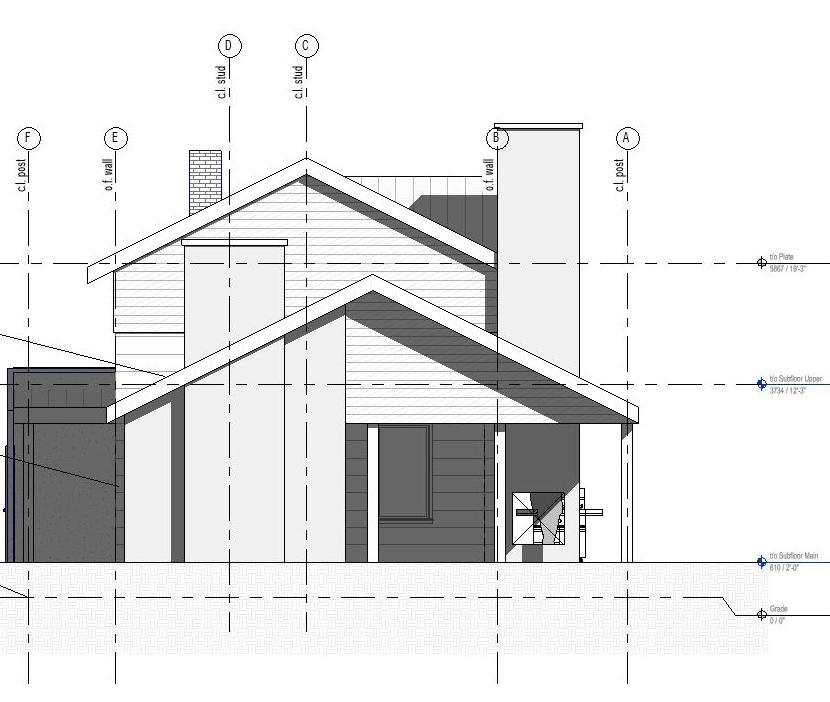
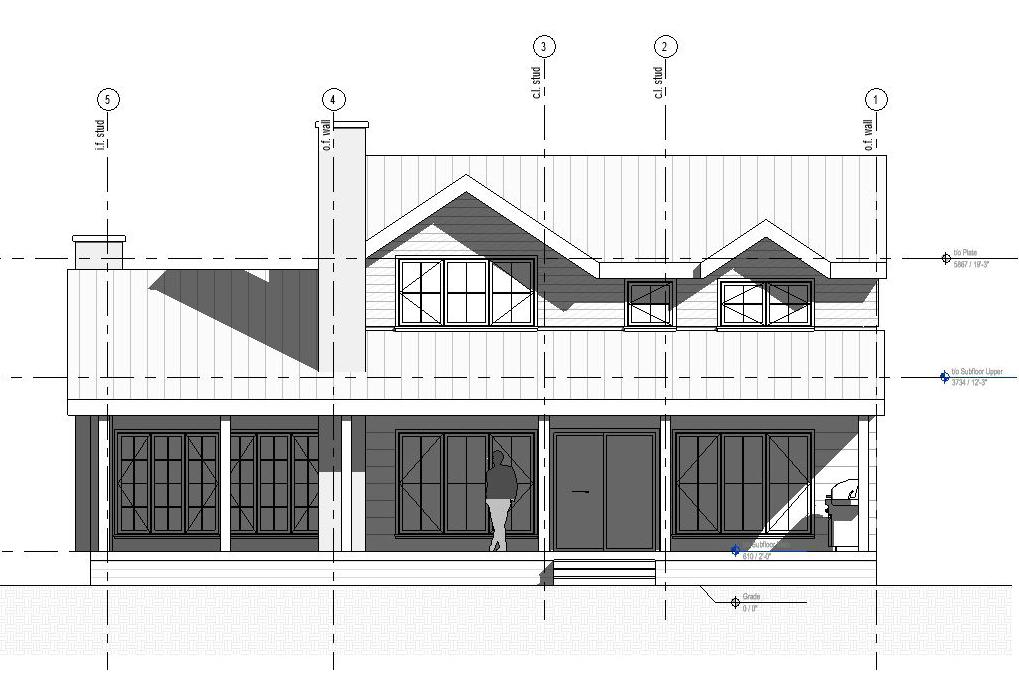

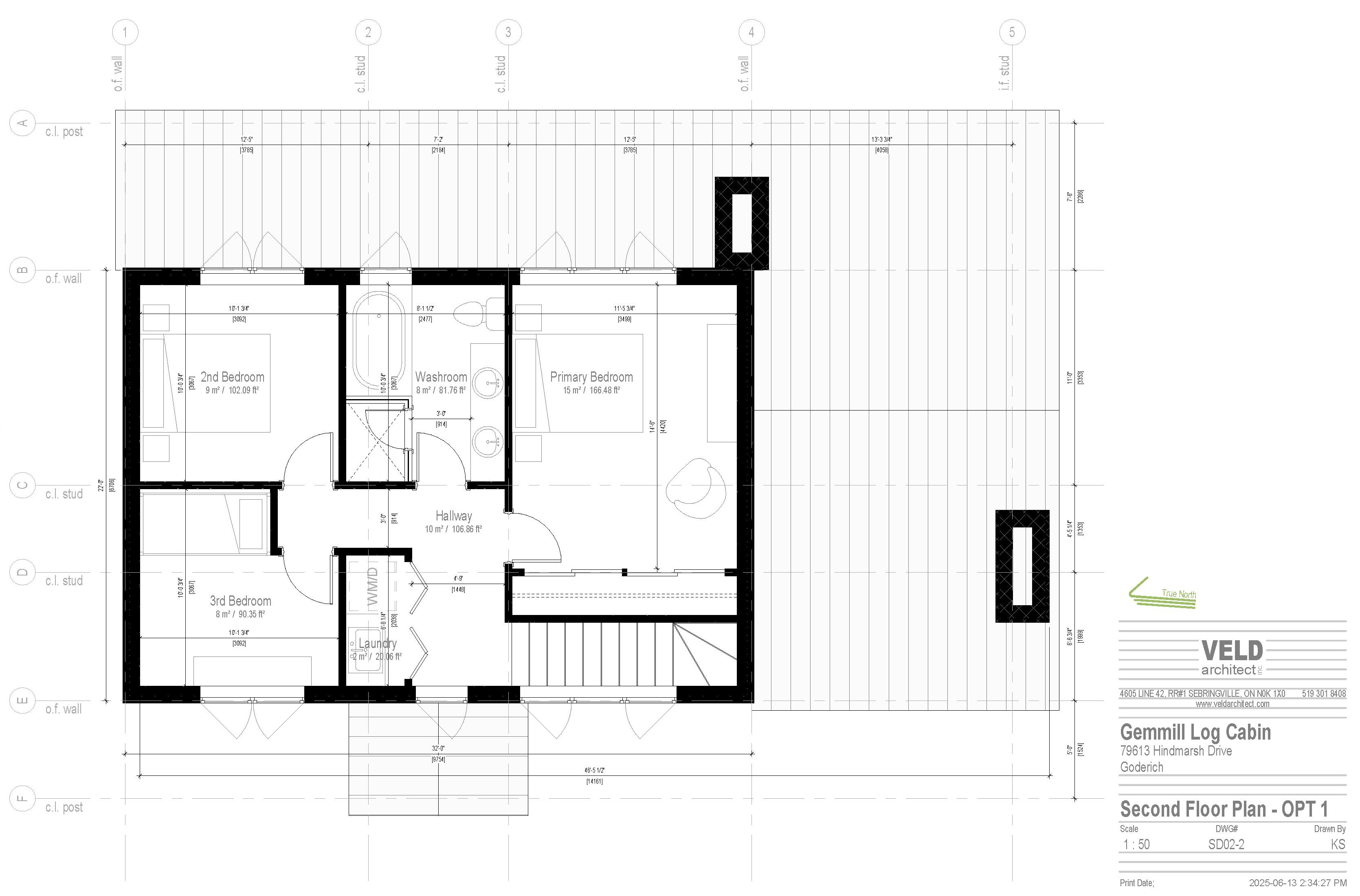
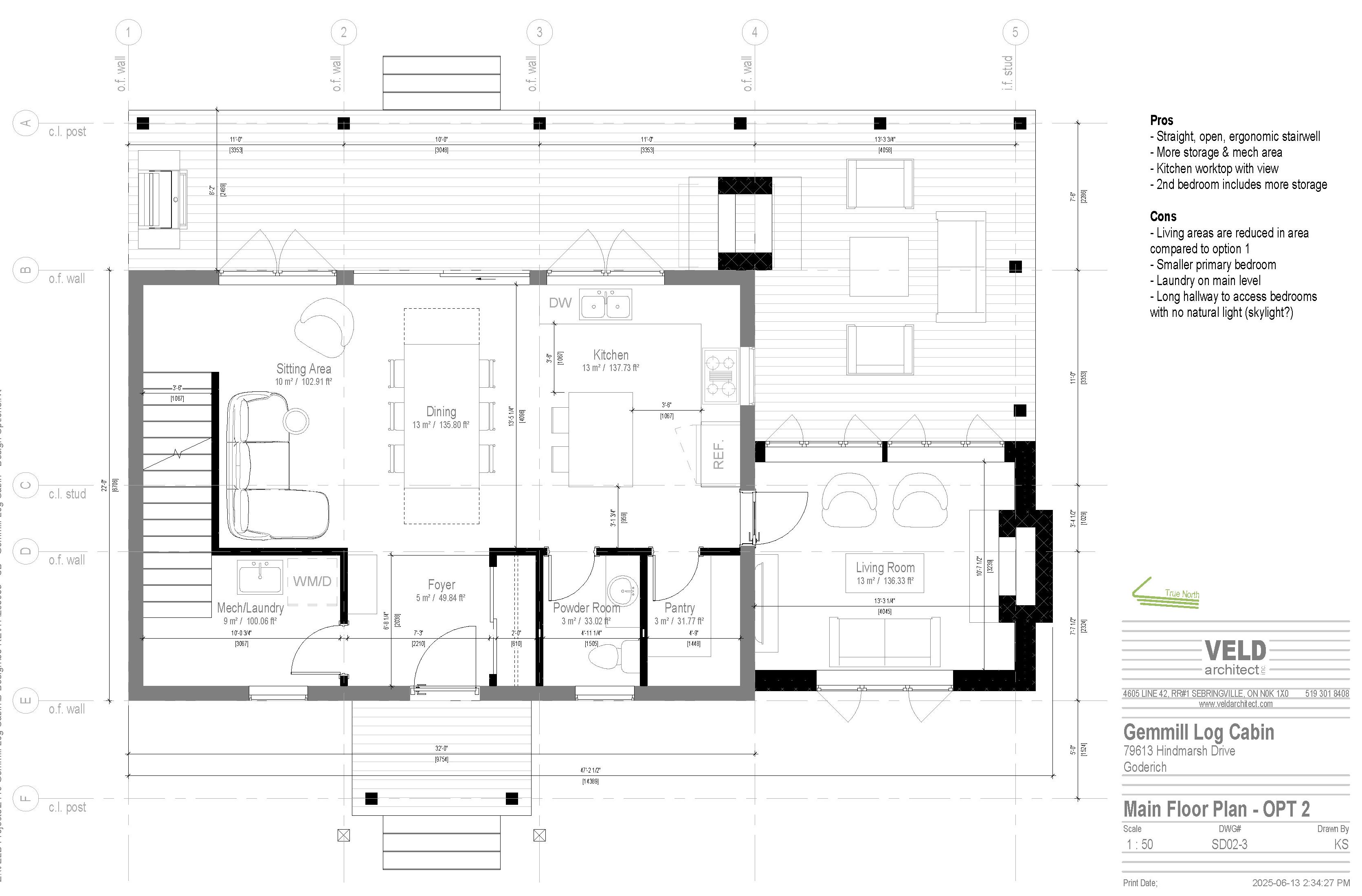
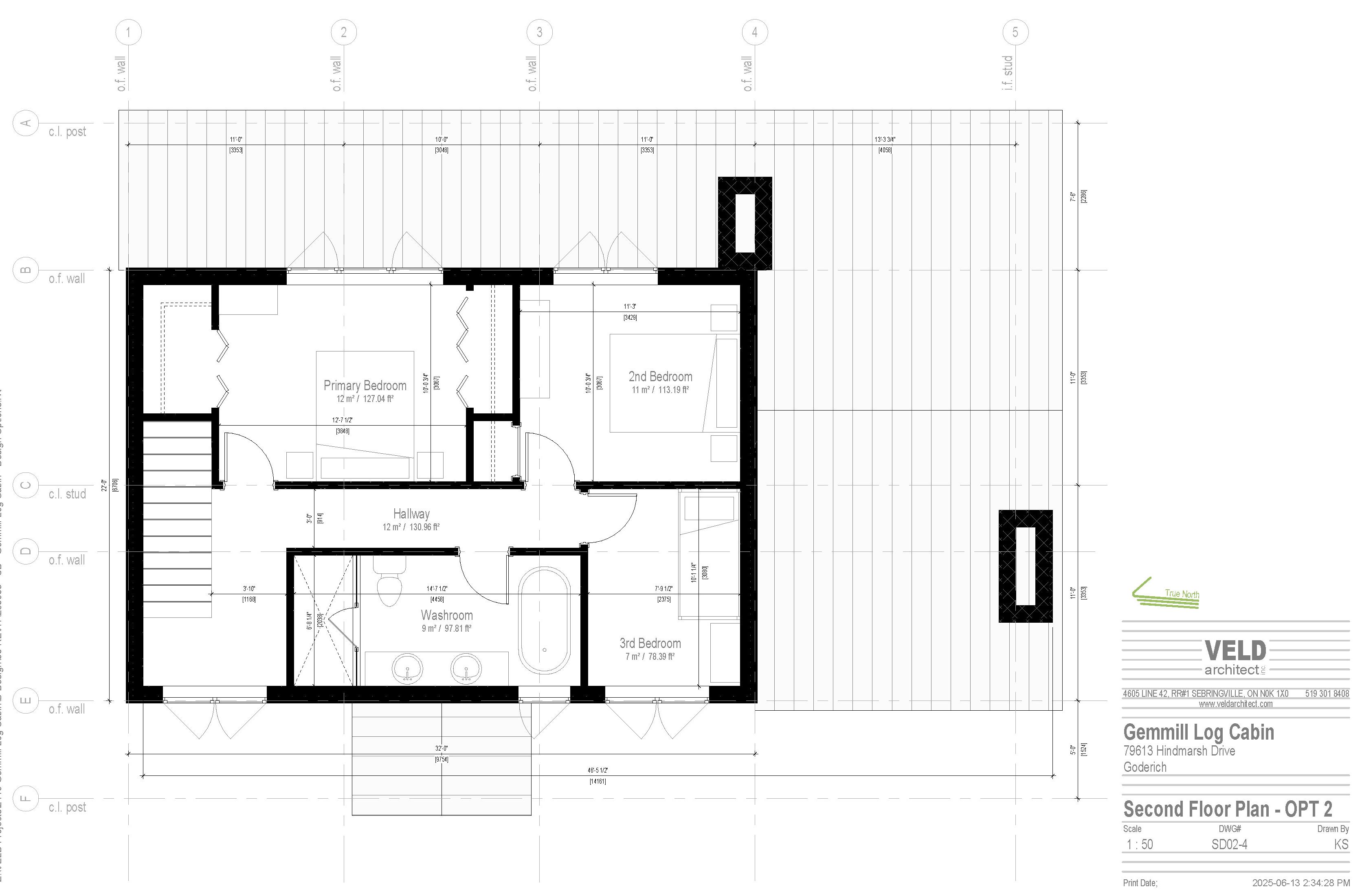
Sardar Heights
Location: Dhaka, Bangladesh
Supervisor: Uttam Saha, Principal at Nandan Architects Ltd.
Scale: 1,114 m2 | Budget: $5,000,000
Completion: 2028
Typology: Mixed-use | Occupancy: Commercial Design Concept: New Construction
Phases: SD, DD, CD - Permit Documentation & AHJ Coordination
Media: AutoCAD 2022, Revit 2020, V-Ray
Goals & Methodology:
The project is situated in Dhaka’s bustling city center, where space constraints and historical significance demanded a design that maximized height while preserving cultural heritage. The building’s form integrates an old gate as the main entrance, blending contemporary aesthetics with the site’s historic character to honor the Sardar family’s legacy.
To achieve these objectives, the design incorporates a mixed-use highrise with:
Ground Floor: Rehabilitated existing shops, creating continuity with the site’s past.
1st–3rd Floors: Exclusive jewelry shops accessed via a dedicated stairway, ensuring a premium experience.
4th Floor: An entertainment hub featuring restaurants and a community center, fostering social engagement.
5th–23rd Floors: Flexible office spaces with green terrace gardens, enhancing natural ventilation and luxury.
24th–25th Floors: Optional residential units for adaptable usage.
Rooftop Garden: Vertical greenery and an open rooftop garden promote sustainability and offer an iconic visual appeal.
This project balances luxury, functionality, and sustainability, transforming a constrained urban site into a landmark that reflects both innovation and cultural pride.
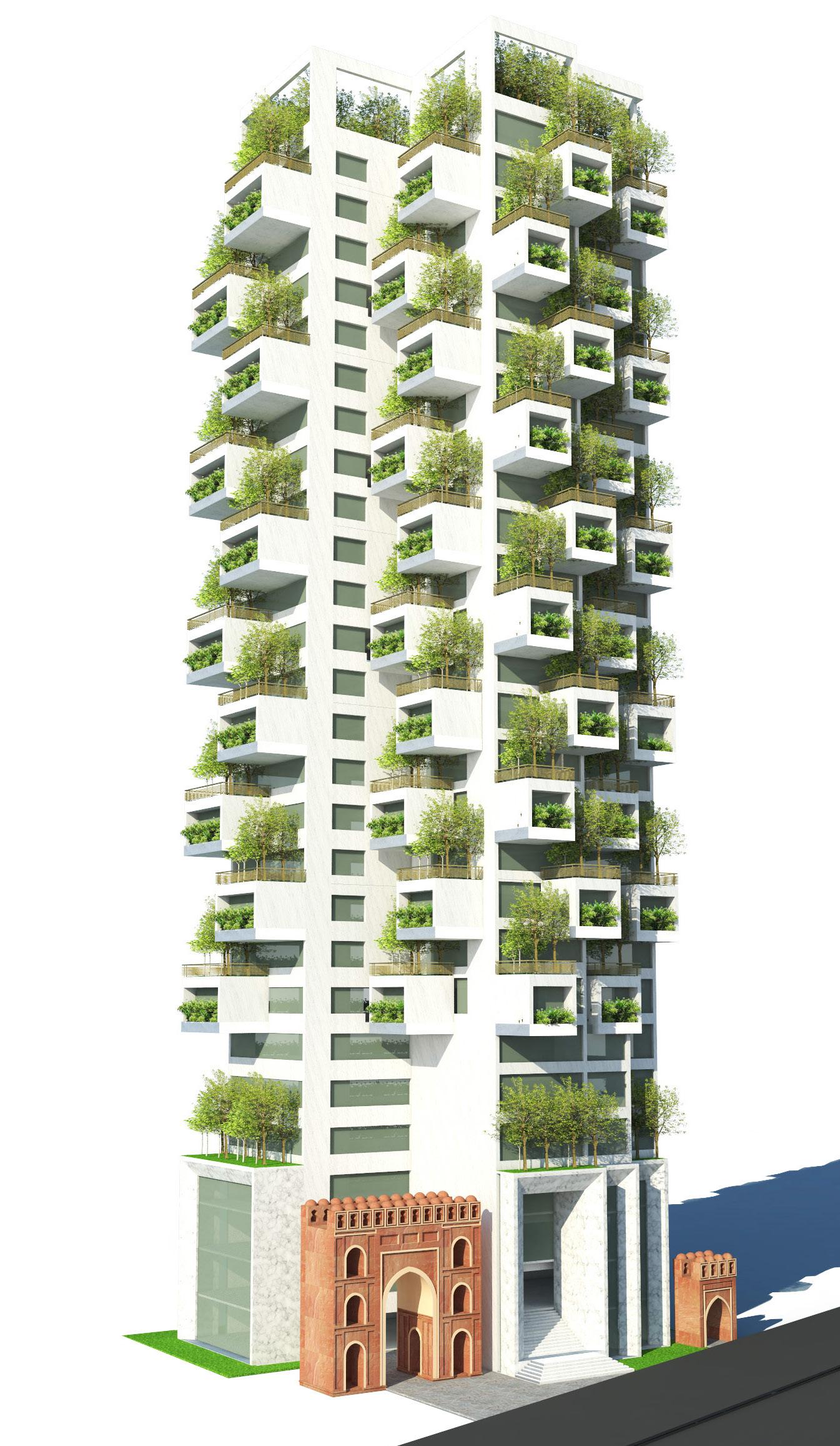
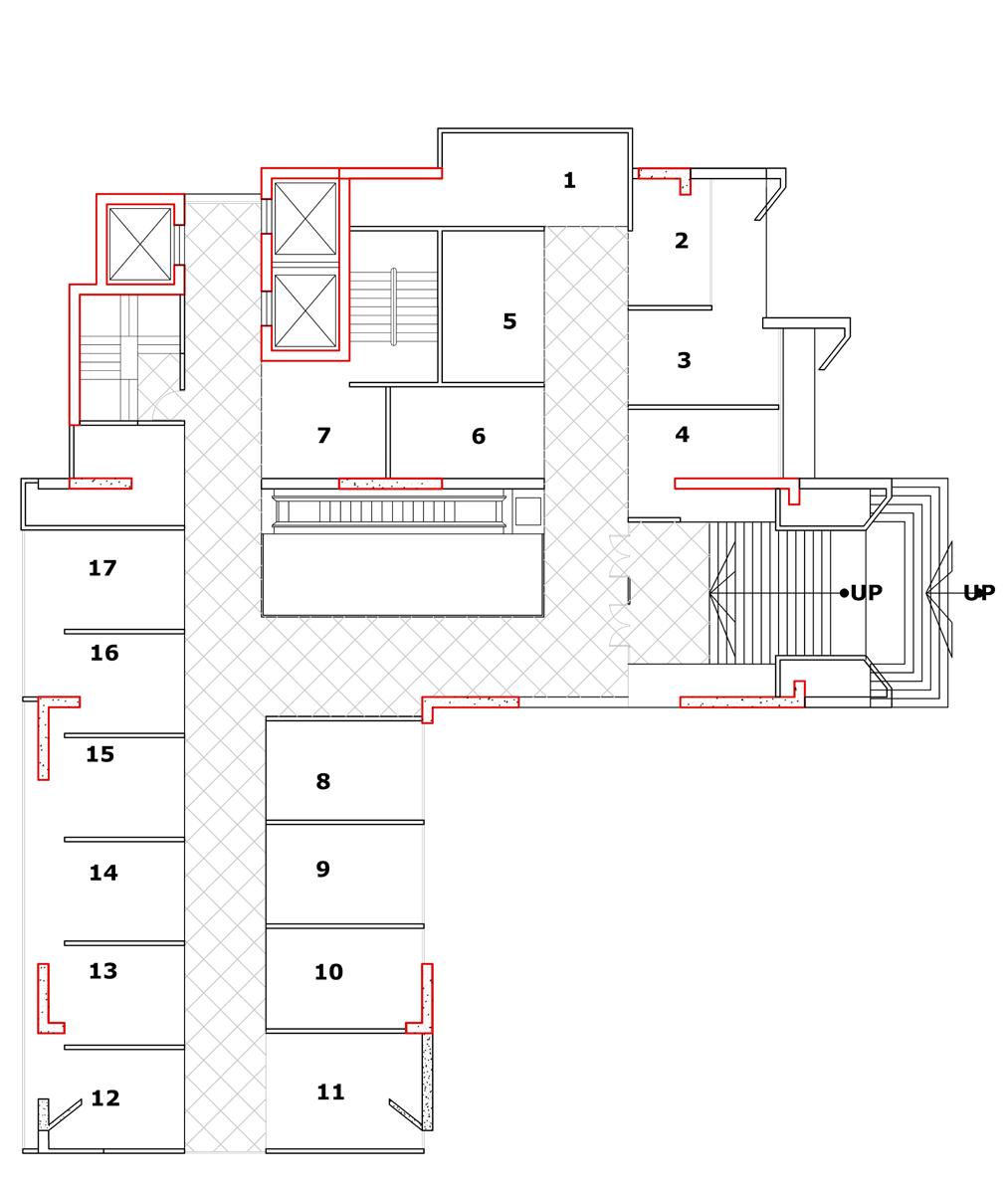
1st-4th Floor Plan [Shopping]
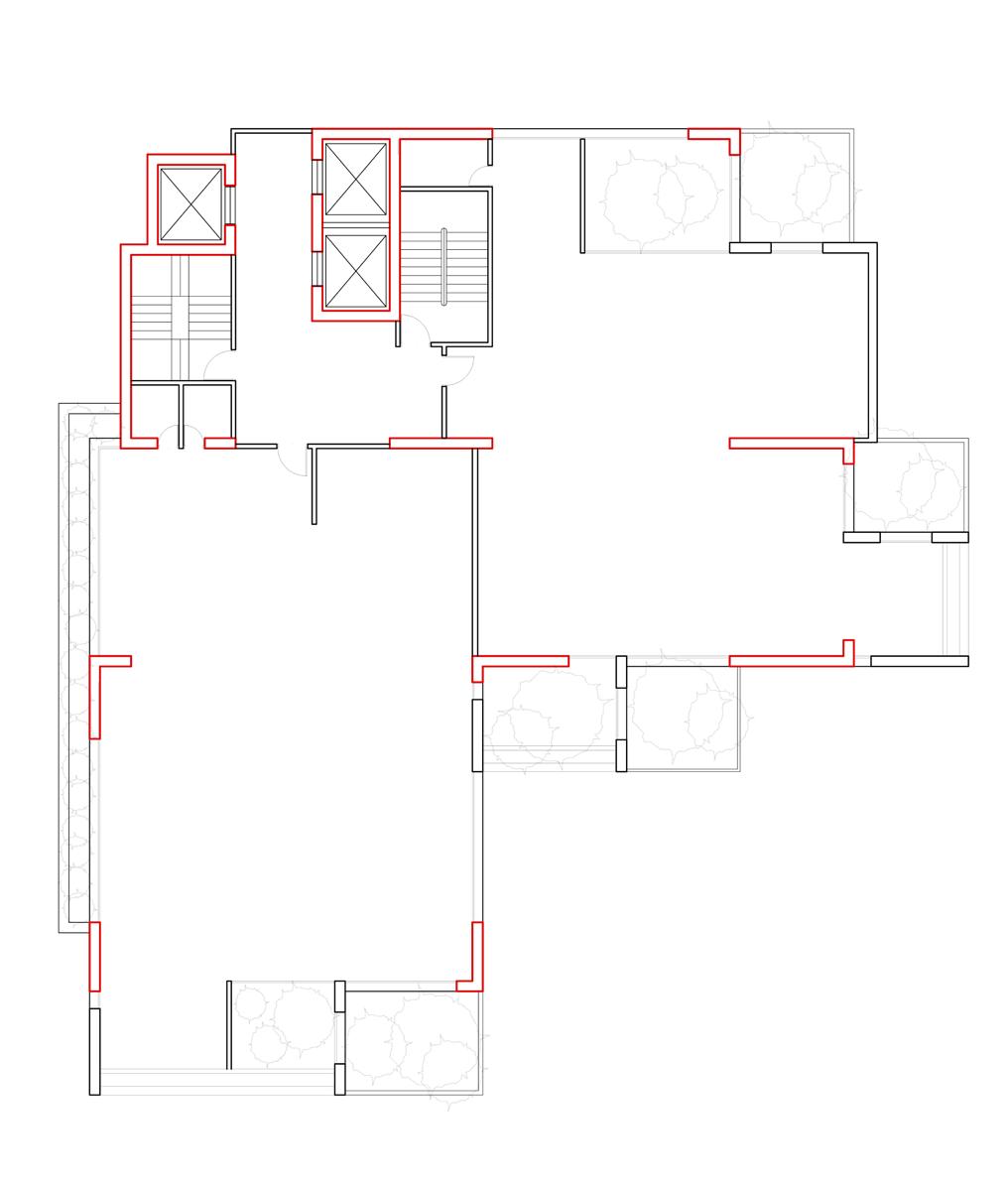
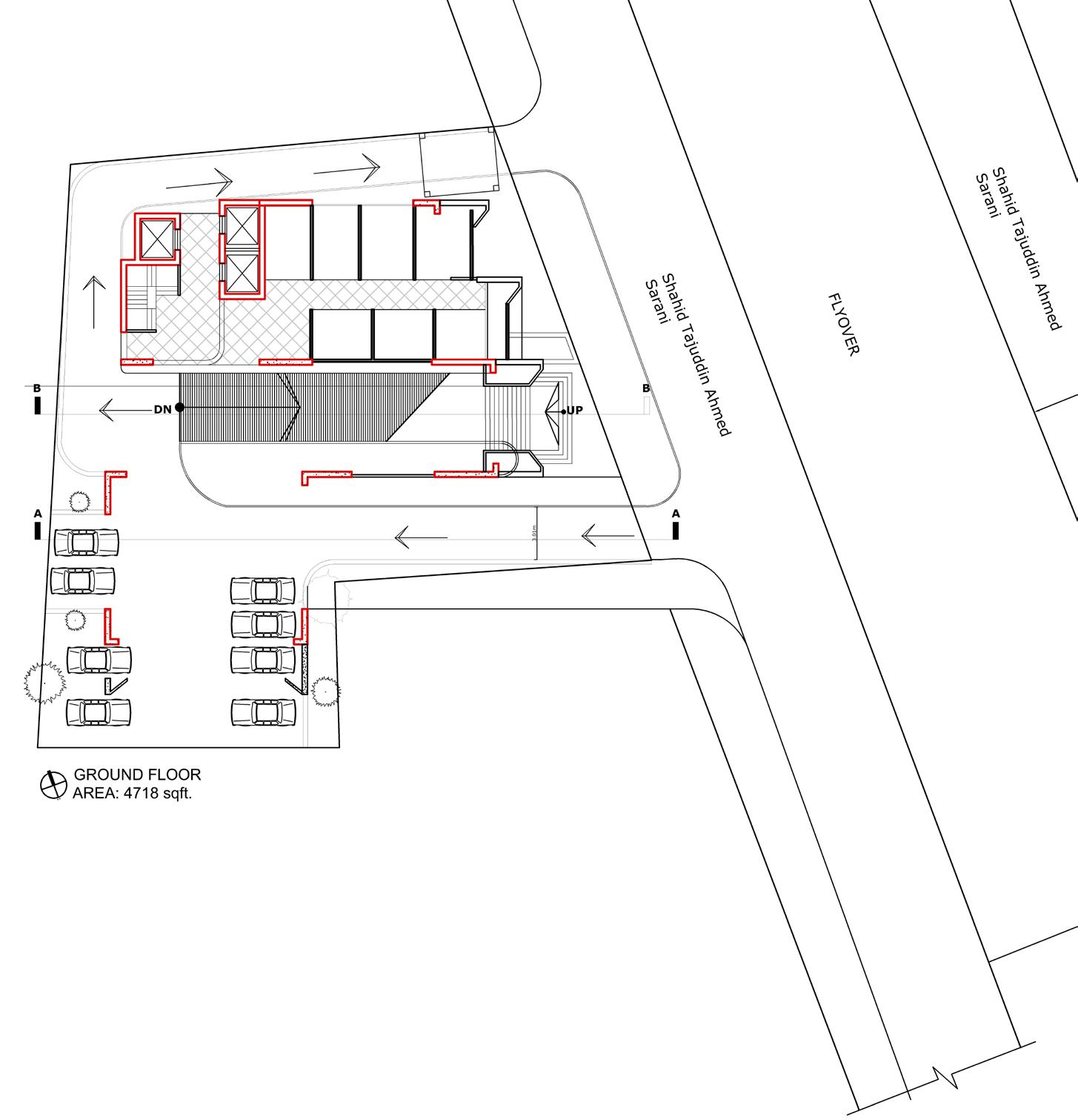
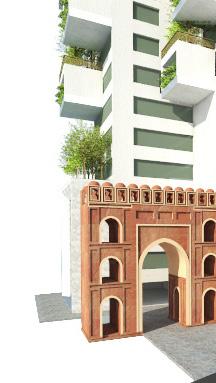

24th-25th Floor Plan [Residences]
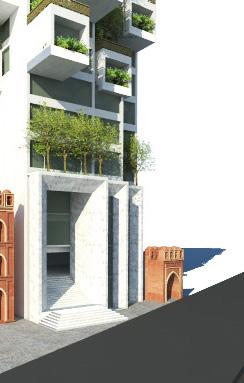
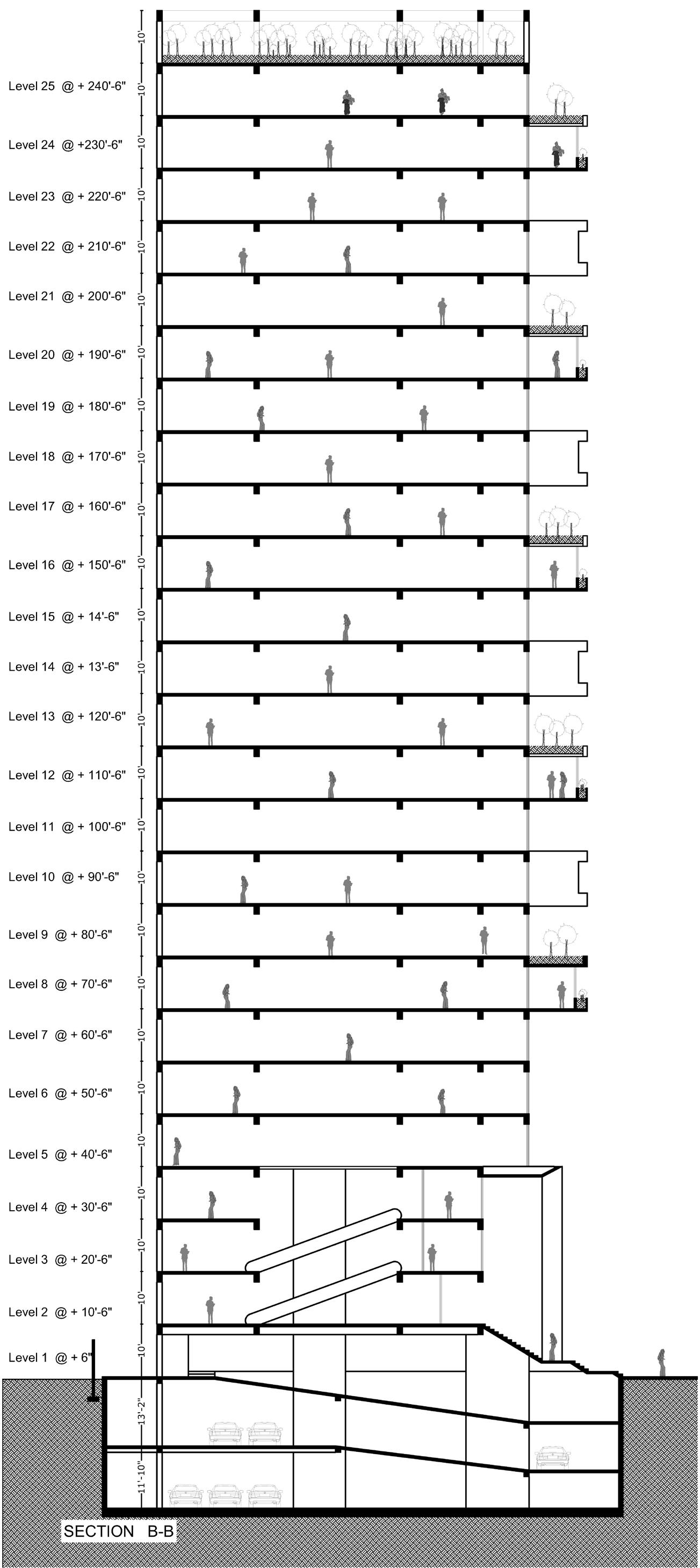
Gopibag Bliss
Location: Dhaka, Bangladesh
Supervisor: Uttam Saha, Principal at Nandan Architects Ltd.
Scale: 930 m2 | Budget: $3,000,000
Completion: 2023
Typology: Multi-family | Occupancy: Residential Design Concept: New Construction
Phases: SD, DD, CD - Permit Documentation & AHJ Coordination
Media: AutoCAD 2022, Revit 2020, Twinmotion
Goals & Methodology:
As Dhaka rapidly grows into one of the world’s densest urban centers, Bliss addresses the challenge of maximizing functionality and connectivity on a constrained 1400 SFT plot. Situated near the city’s largest flyover and the vibrant Jorpukur Math playground, the project leverages its prime location to enhance urban accessibility while catering to the dynamic lifestyles of its residents.
Key design solutions included:
Optimal Space Utilization: Developed a multi-family residential building that optimizes vertical space while providing functional living units for urban families.
Connectivity and Accessibility: Integrated proximity to essential urban amenities such as educational institutions, healthcare facilities, shopping centers, and public transportation.
Community Integration: Designed shared spaces that promote a sense of community within the development while maintaining strong ties to the surrounding urban fabric.
This project exemplifies how thoughtful design and efficient planning can transform small urban plots into thriving residential spaces that enhance connectivity, convenience, and the quality of life for residents.
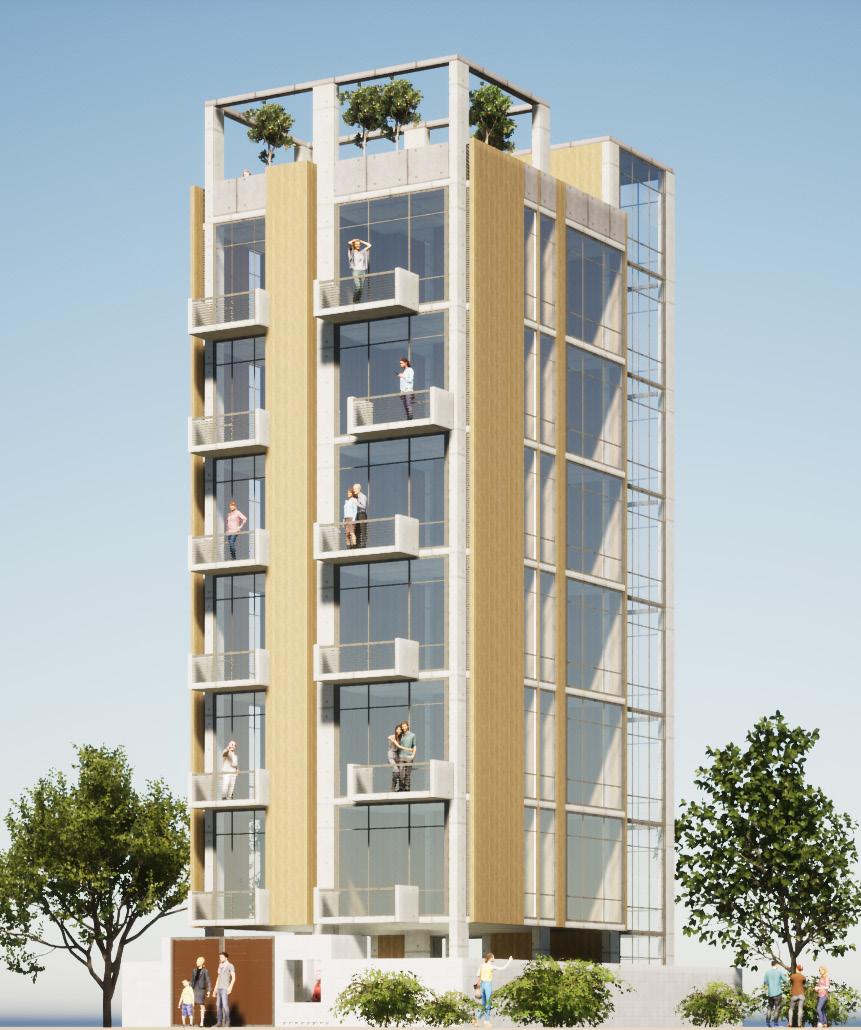
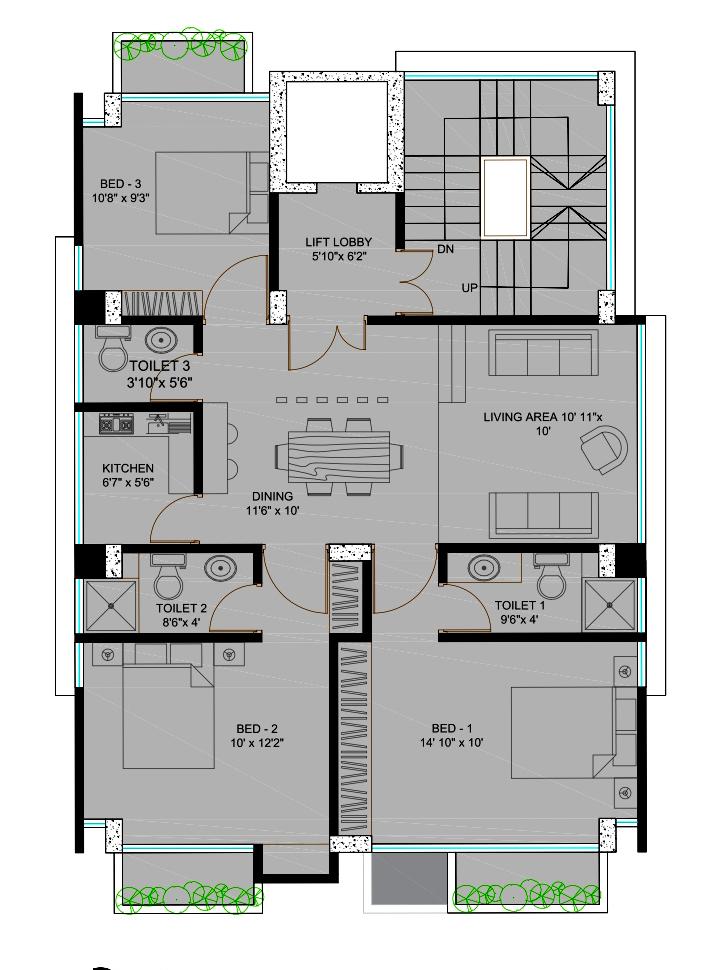
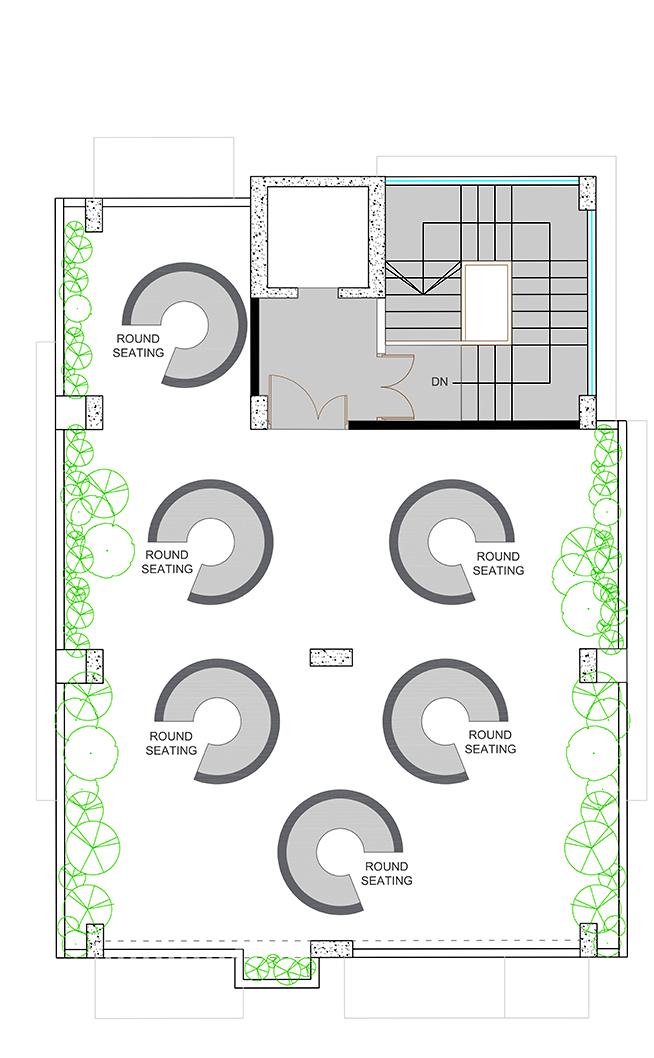
Site Context
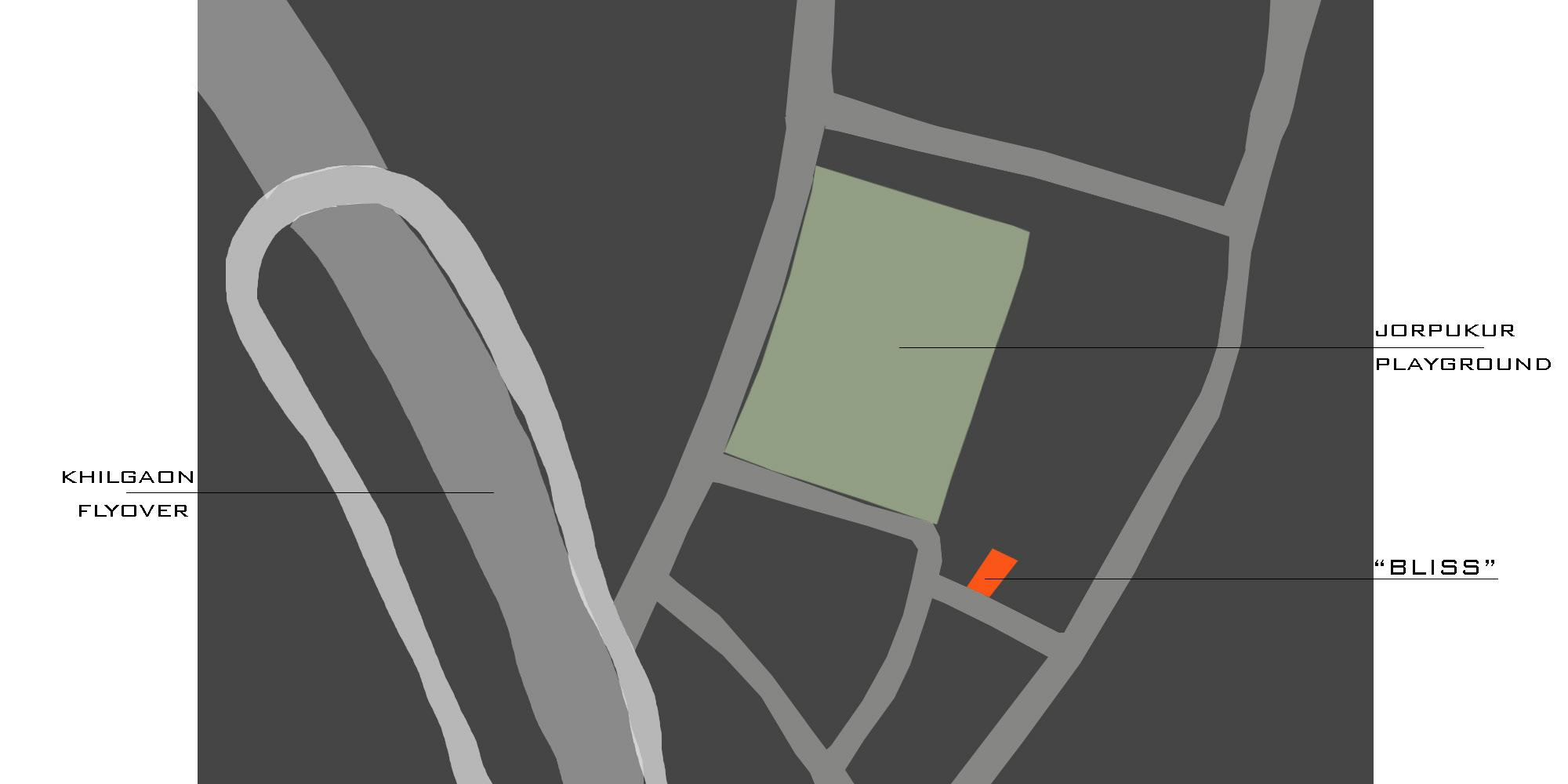
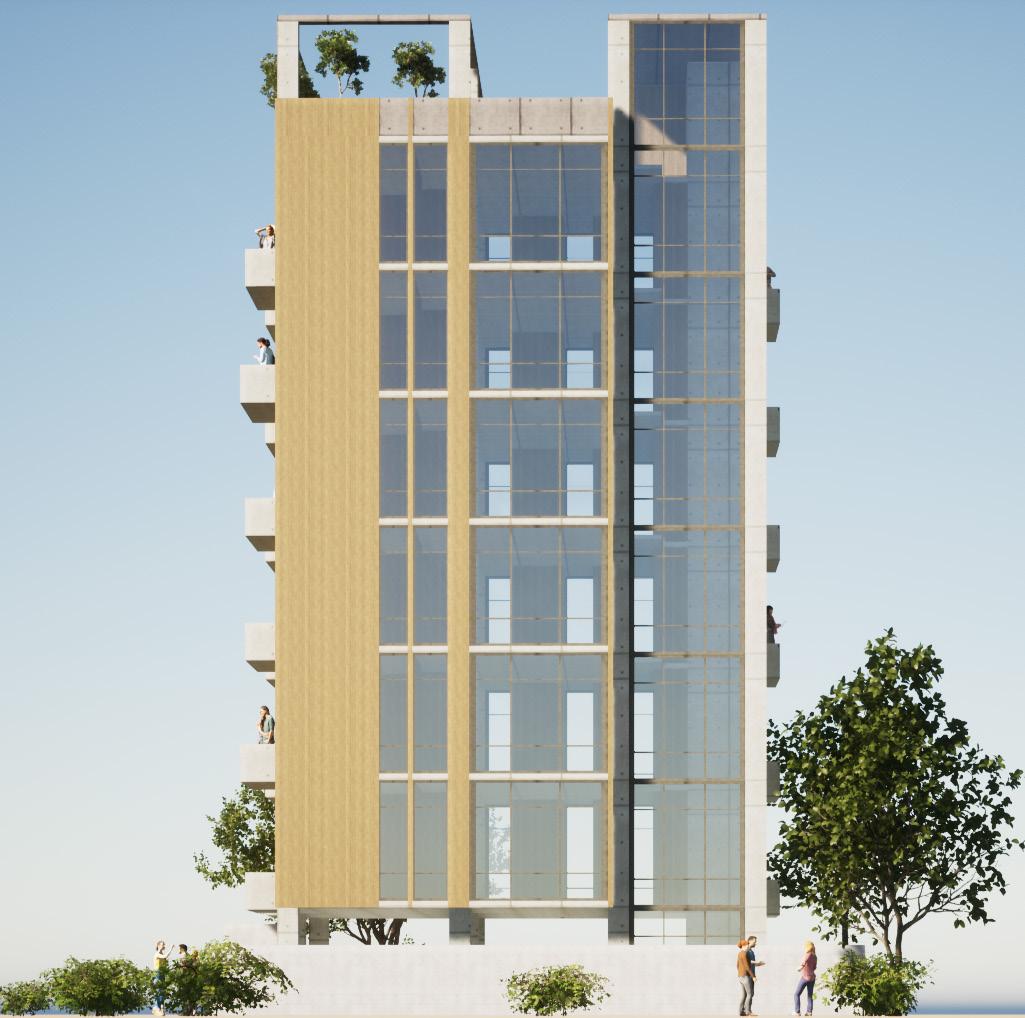
Garden Musing
Location: Waterloo, ON, Canada
Instructor: Val Rynnimeri, Professor at University of Waterloo
Scale: 2,450 m2 | Budget: $10,000,000
Academic Term: Fall’ 2021
Typology: Multi-unit | Occupancy: Co-Housing Design Concept: Adaptive re-use
Phases: PD, SD, DD - Technical report | MA Comprehensive Design Media: AutoCAD 2021, Rhino 7, Twinmotion, Revit 2020
Goals & Methodology:
Garden Musing is a co-housing facility originally envisioned for long-hauler COVID-19 patients, with flexible potential for post-pandemic uses such as wellness retreats, seniors’ living, or transitional housing. Rooted in biophilic design, the project aims to foster healing, resilience, and community well-being through nature-integrated architecture.
Key design strategies include:
Therapeutic Landscapes: Preserving mature trees and introducing medicinal gardens that support communal rituals like brewing herbal teas and seasonal harvesting.
Biophilic Principles: Emphasizing daylight, forest views, natural ventilation, and tactile materials to reduce stress, promote circadian rhythm, and enhance emotional well-being.
Sustainable Rehabilitation: Merging restorative healthcare with adaptive reuse strategies to create a low-impact, community-focused living model.
By intertwining nature and built form, the project reimagines healing as a shared, immersive, and sustainable experience.
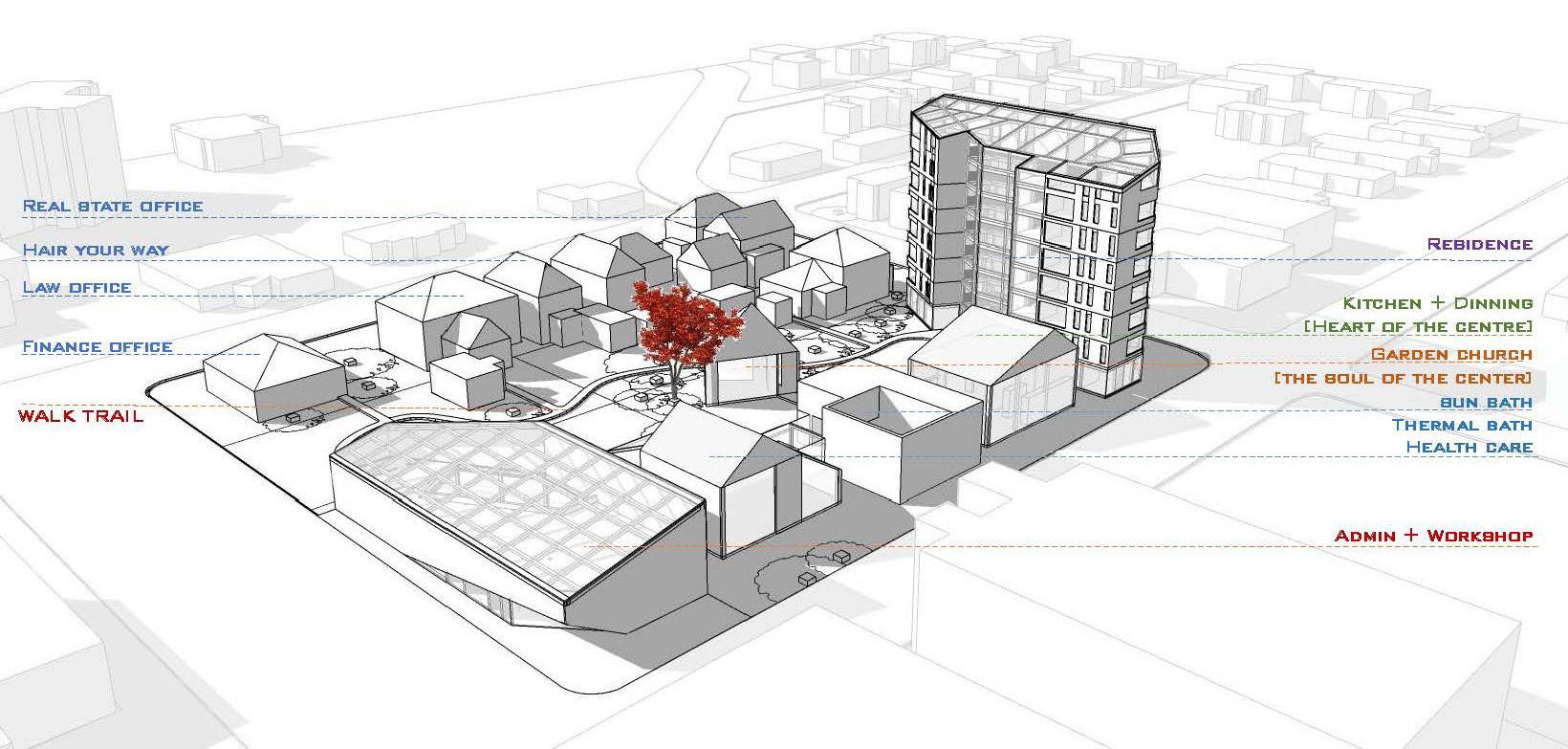
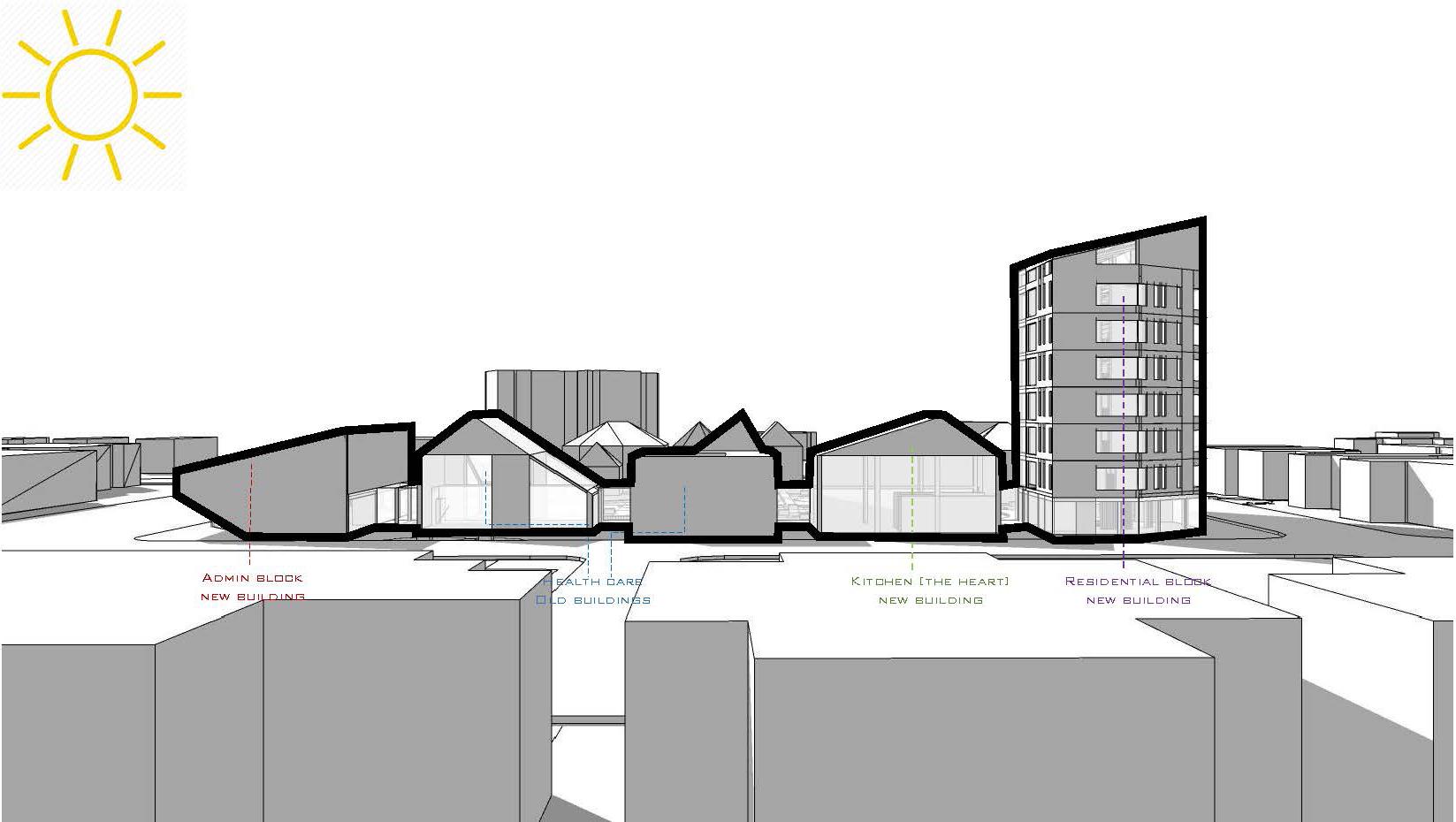

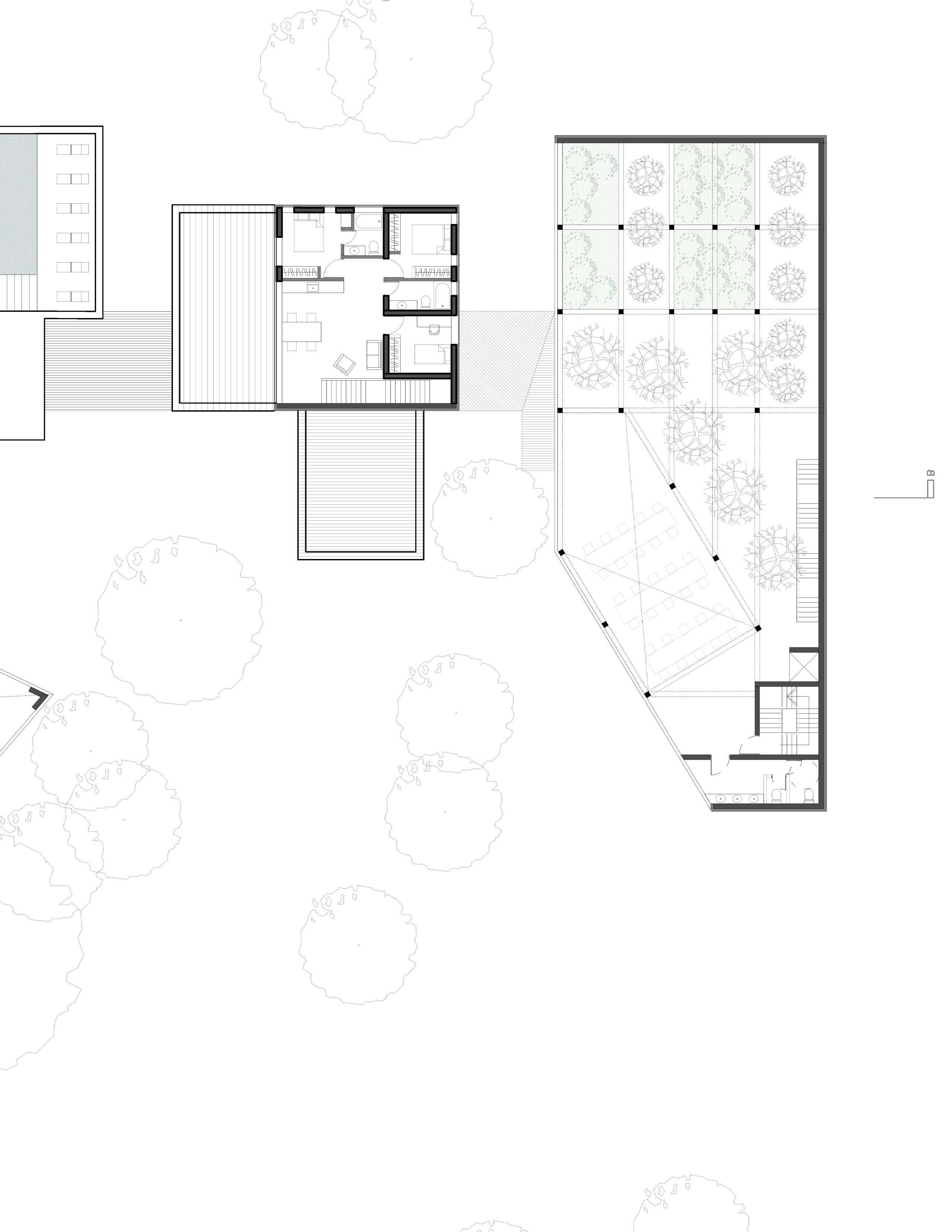
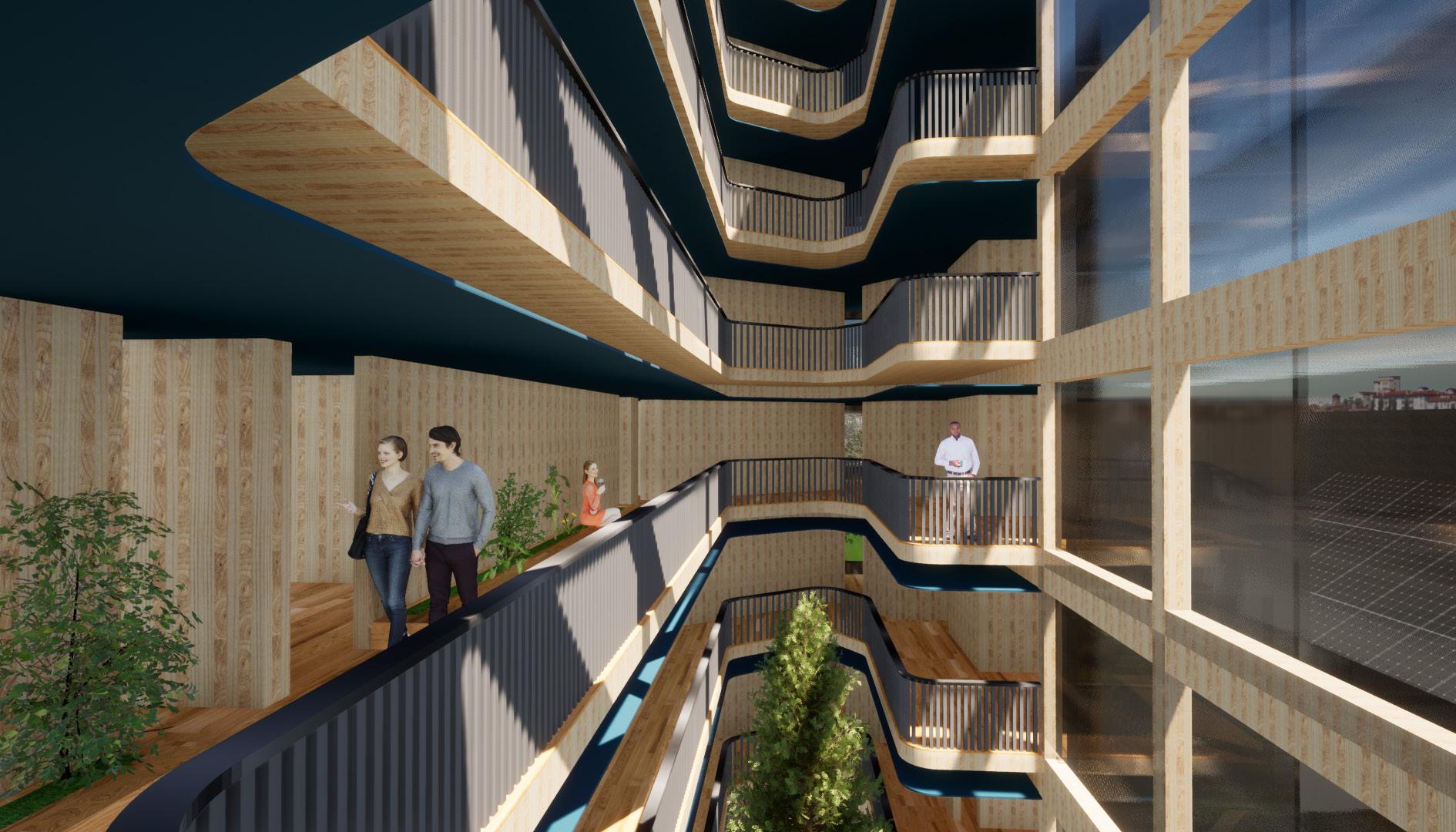


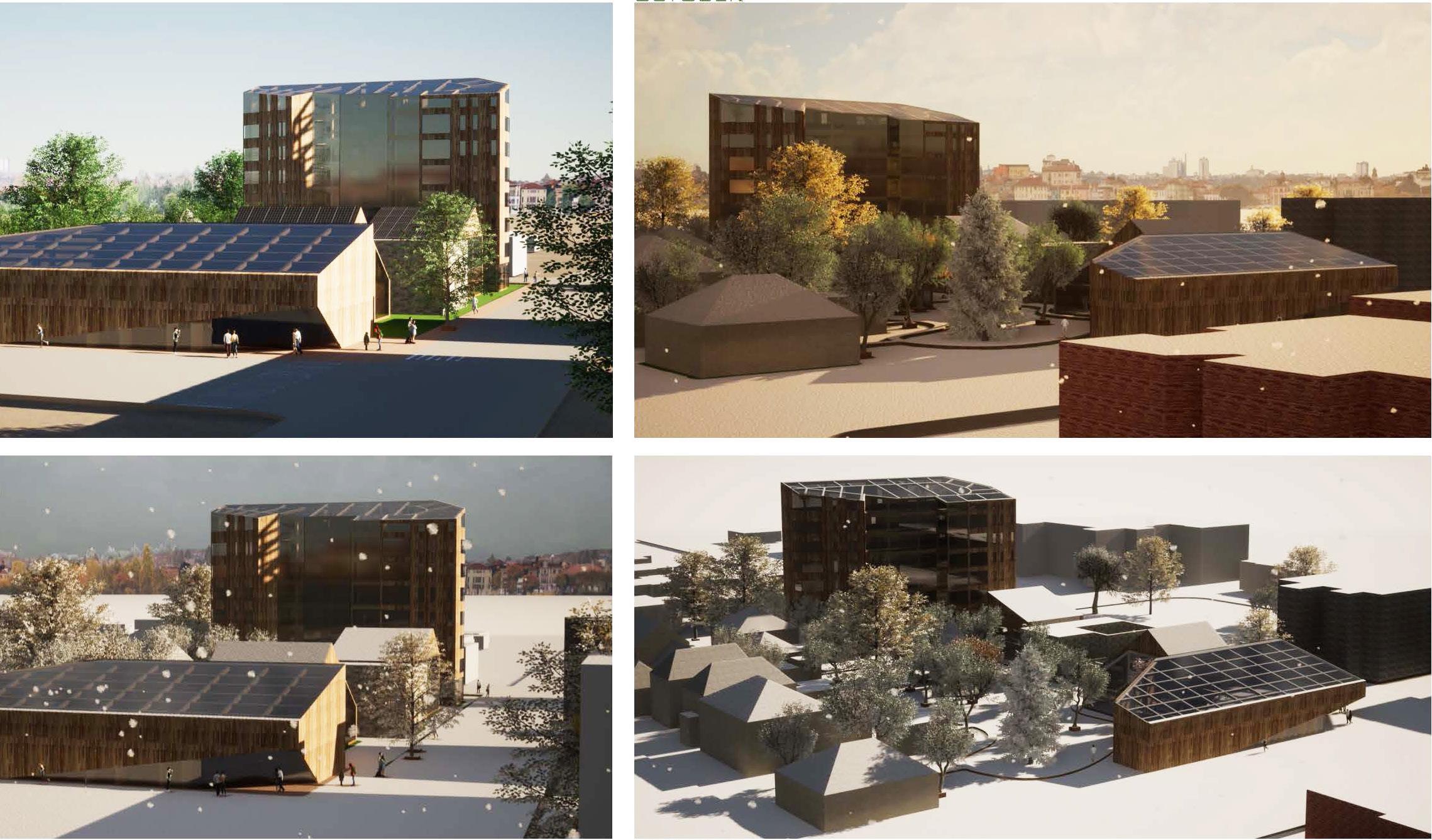
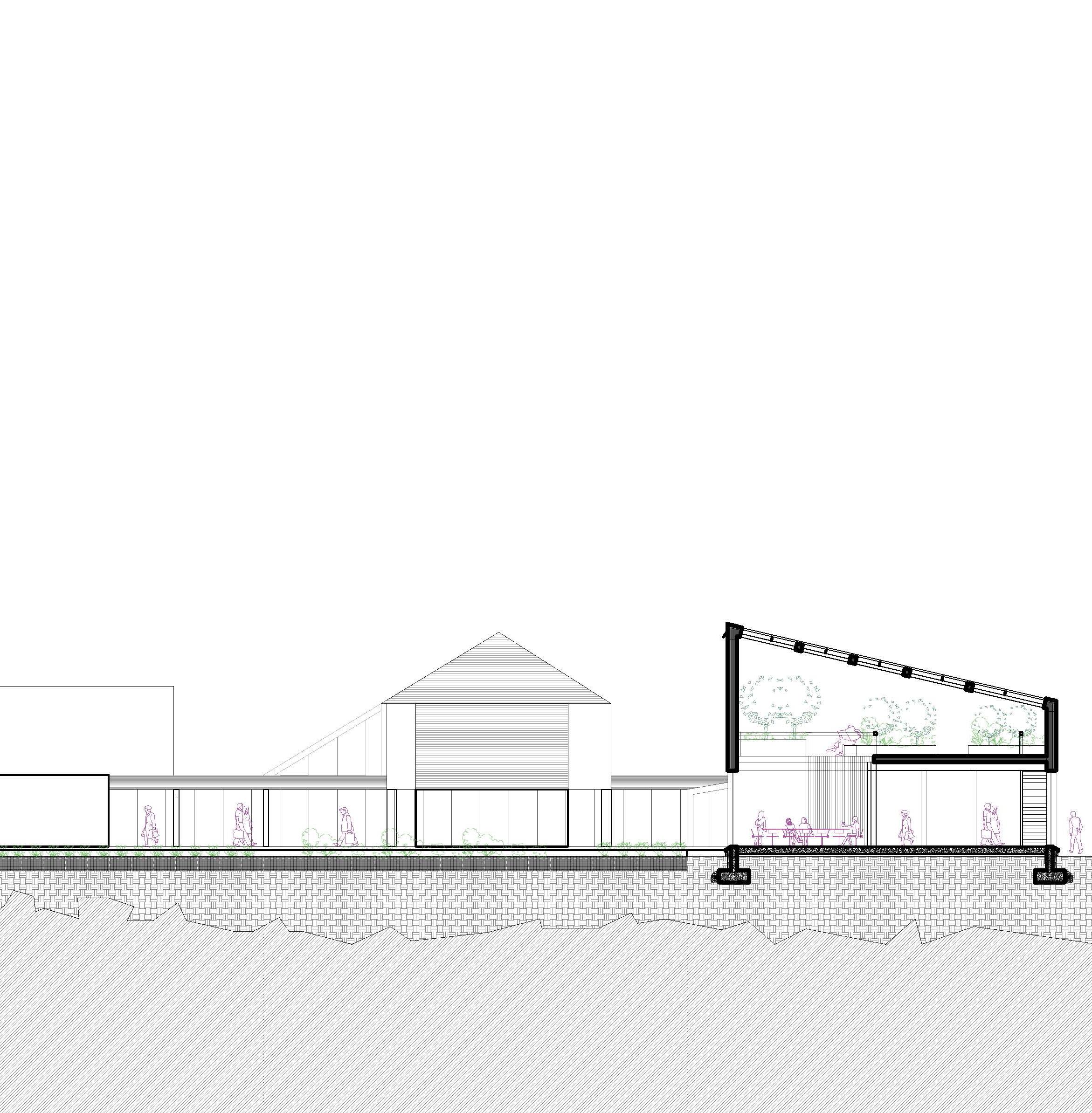

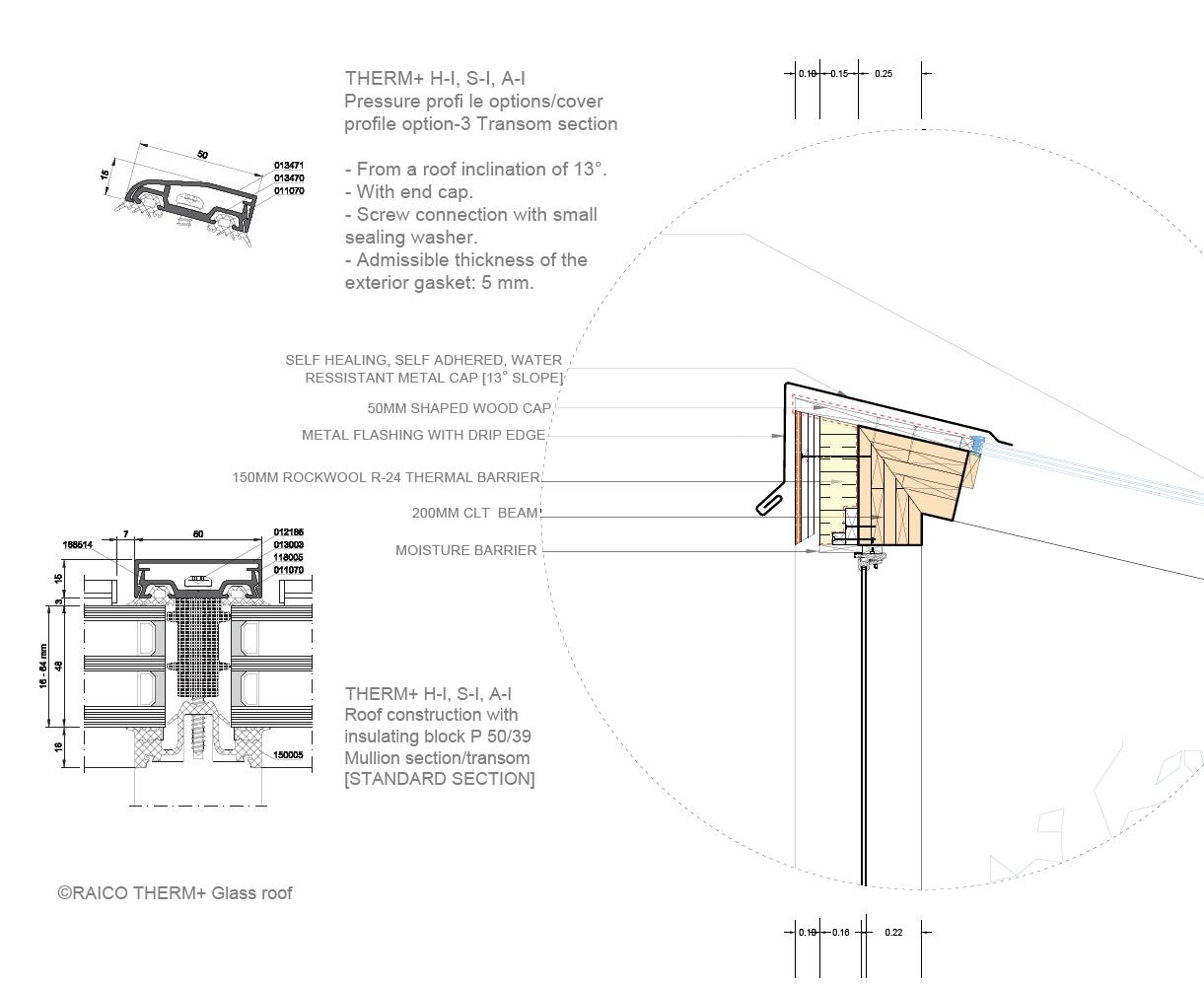
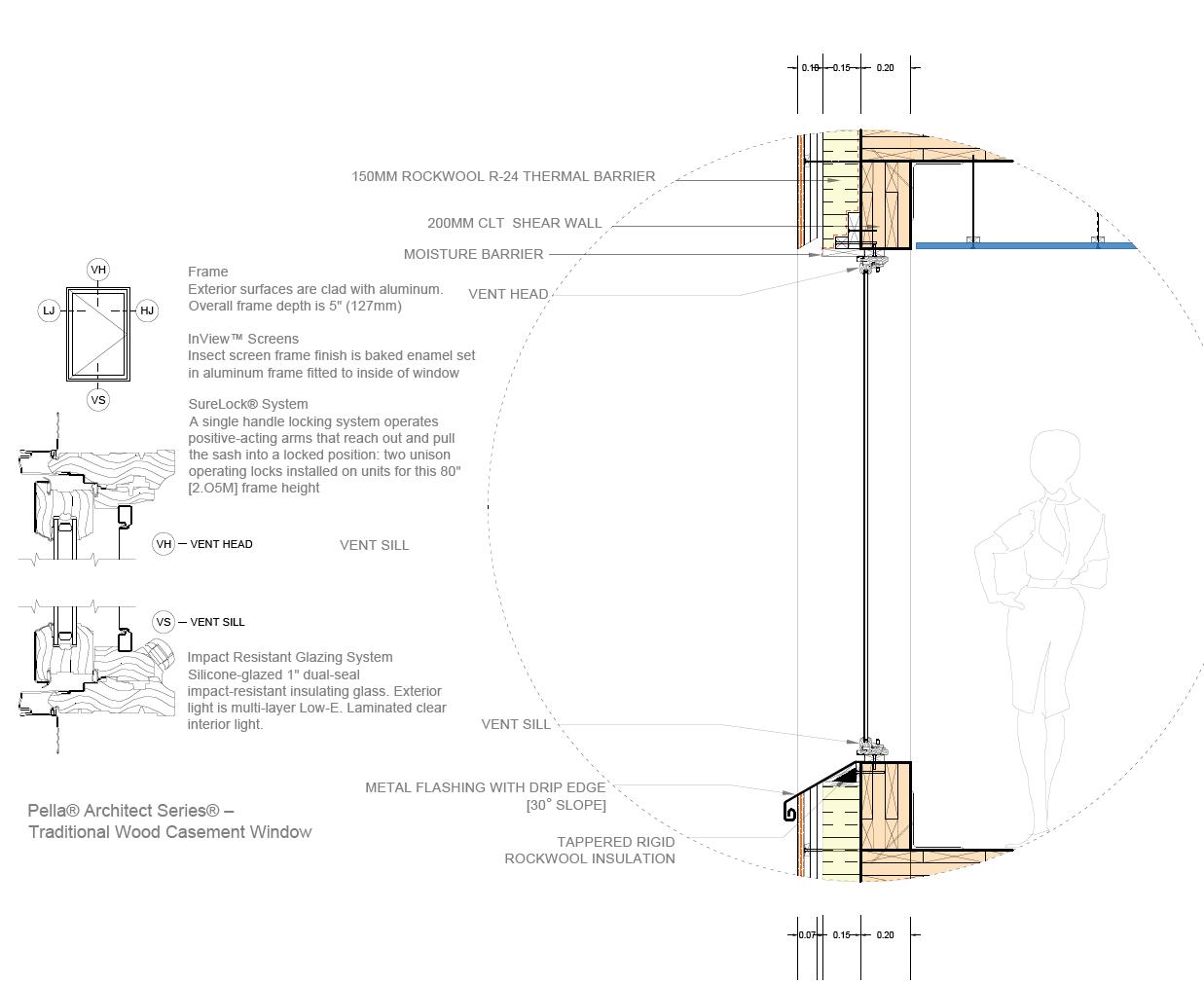


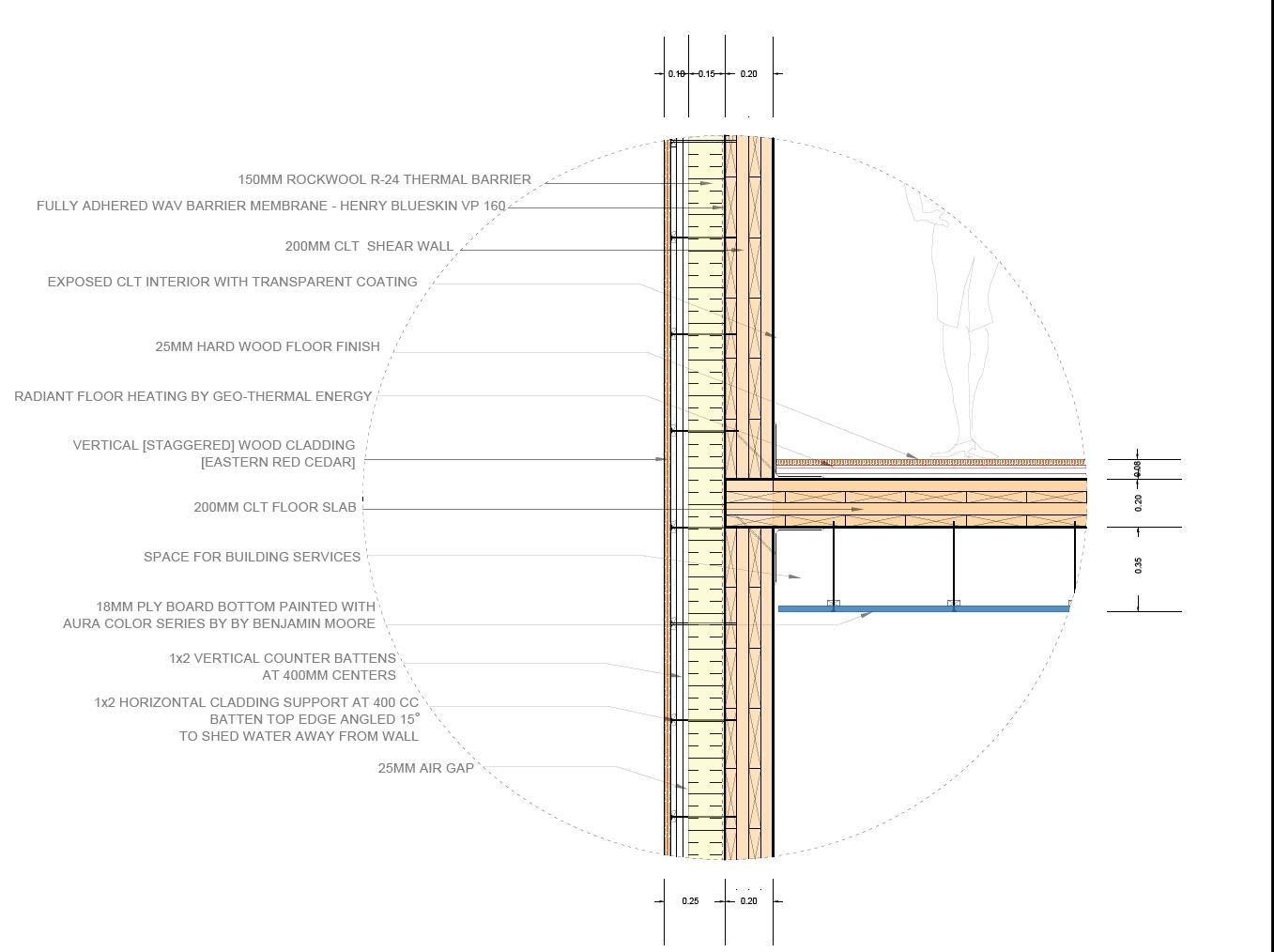
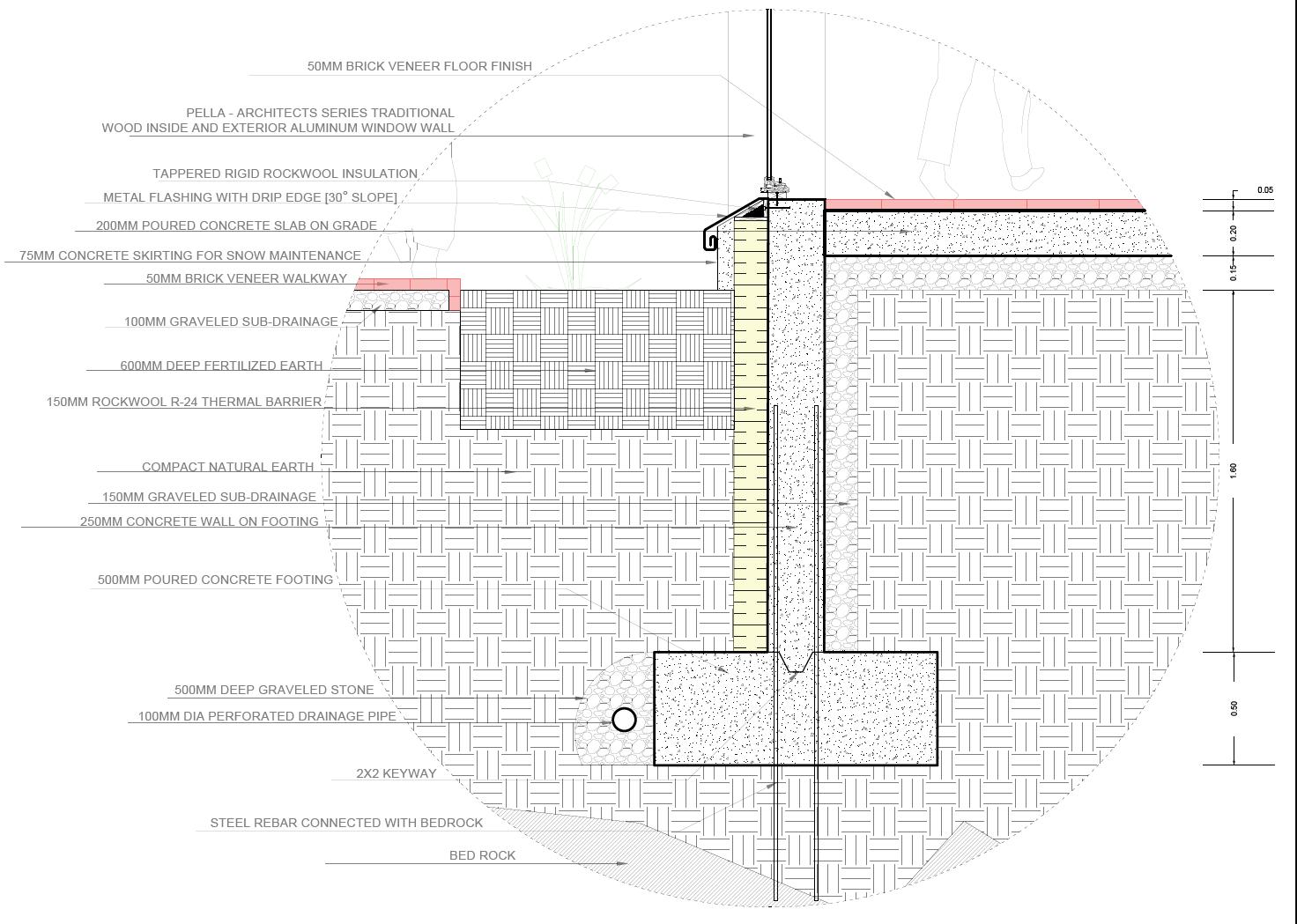
The BarnYard
Location: Wabana, NL, Canada
Instructor: Lola Shepperd, Professor at University of Waterloo
Scale: 1,540 m2 | Budget: $500,000
Academic Term: Winter’ 2022
Typology: Institutional | Occupancy: Assembly Design Concept: Adaptive re-use
Phases: PD, SD | MB Thesis practice Design Studio Media: AutoCAD 2021, Rhino 7, Revit 2020
Goals & Methodology:
Once a thriving mining community, Bell Island became emblematic of degrowth following the industry’s collapse, leaving unemployment, addiction, and an aging population in its wake. The Neary’s Barn Transformation project envisions regrowth through the adaptive reuse of a historically significant structure, repurposed into a space for healing, self-discipline, and resilience. Key interventions include:
Agricultural Integration: Establishes sustainable farming practices to reconnect the community with nature and provide meaningful engagement. Community Resilience: Revitalizes the barn as a hub for shared purpose and healing, fostering a renewed sense of identity for Bell Island residents.
This project exemplifies how adaptive reuse and agriculture can serve as tools for building self-sufficient, thriving communities in the face of socio-economic challenges.
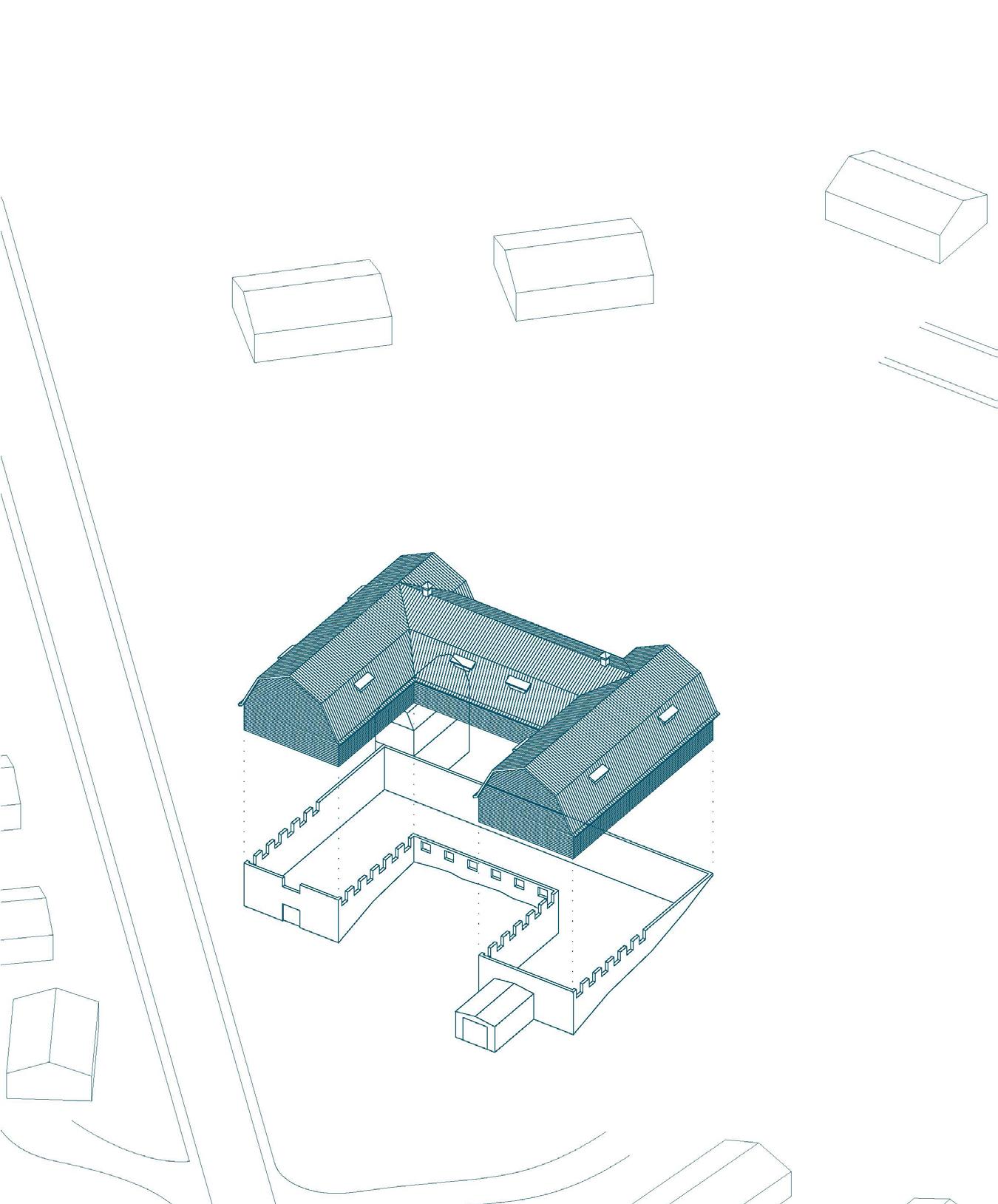
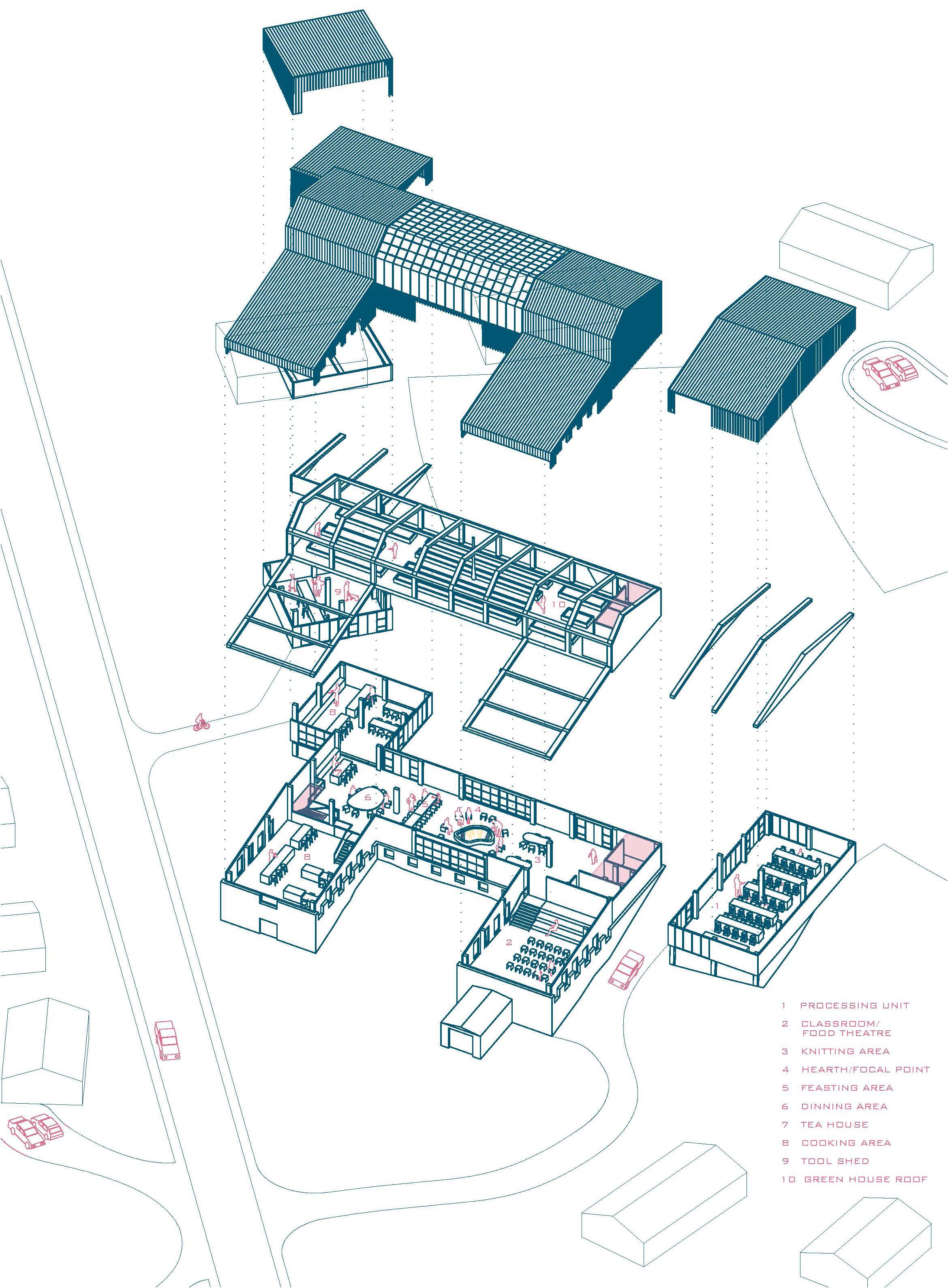
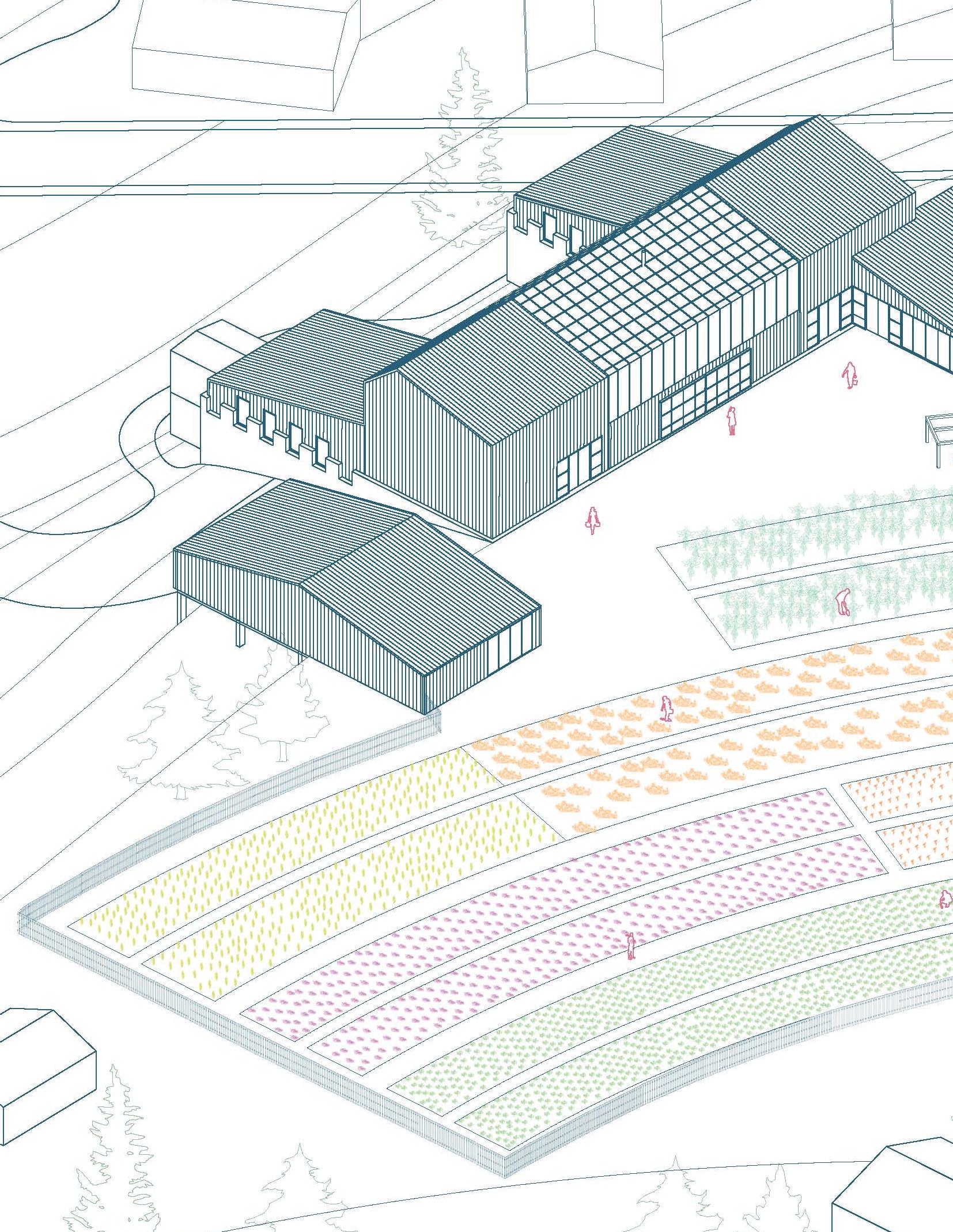
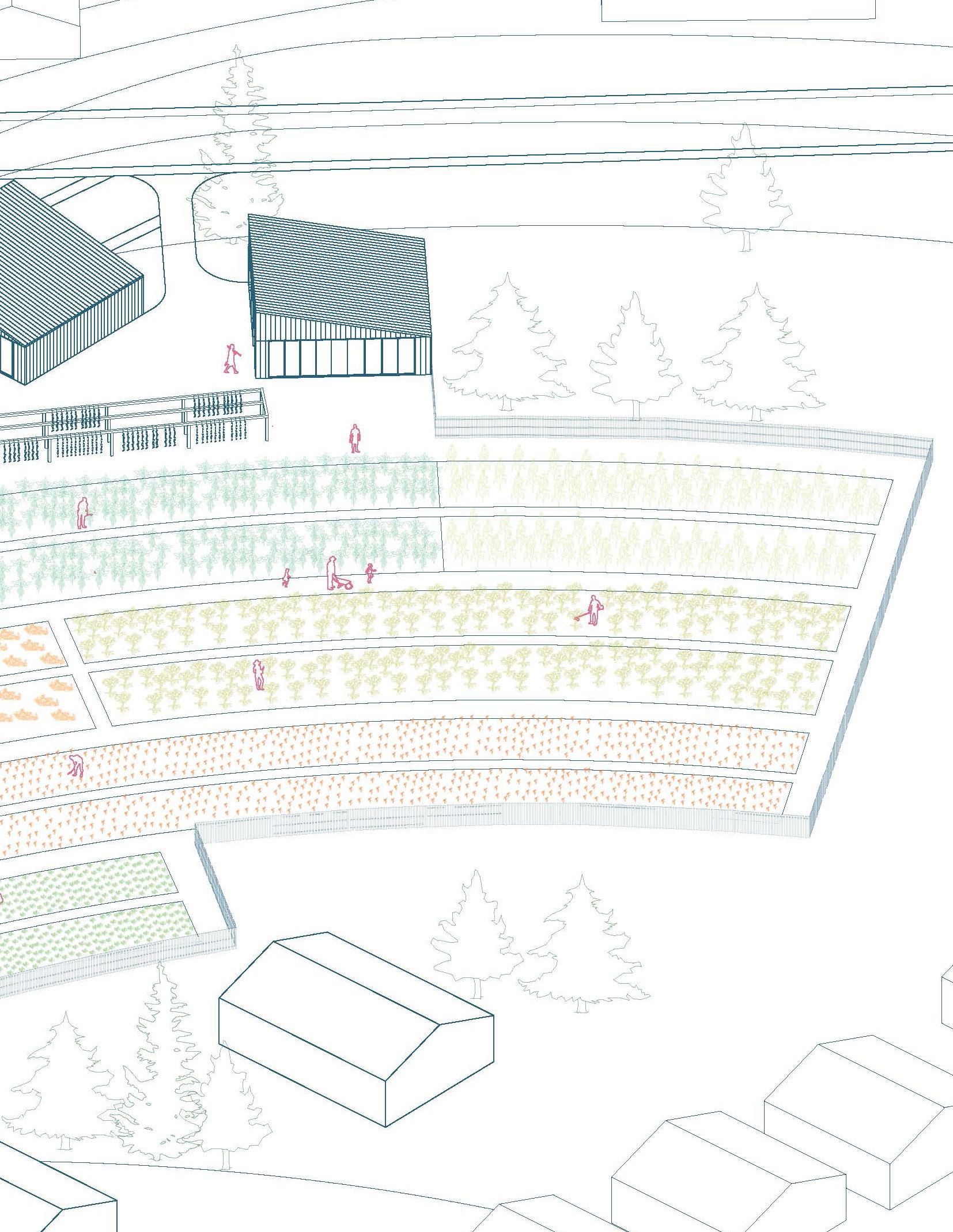
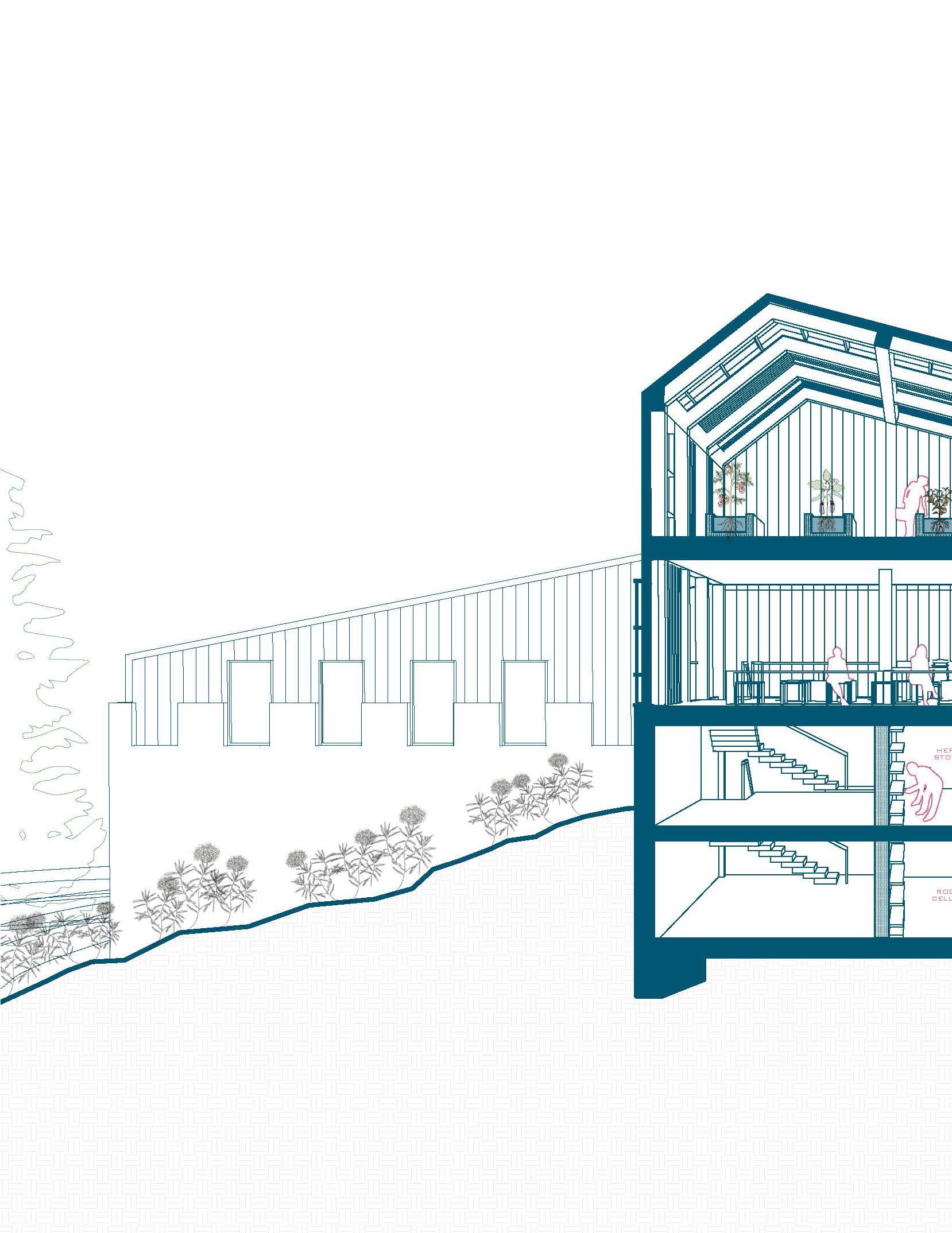
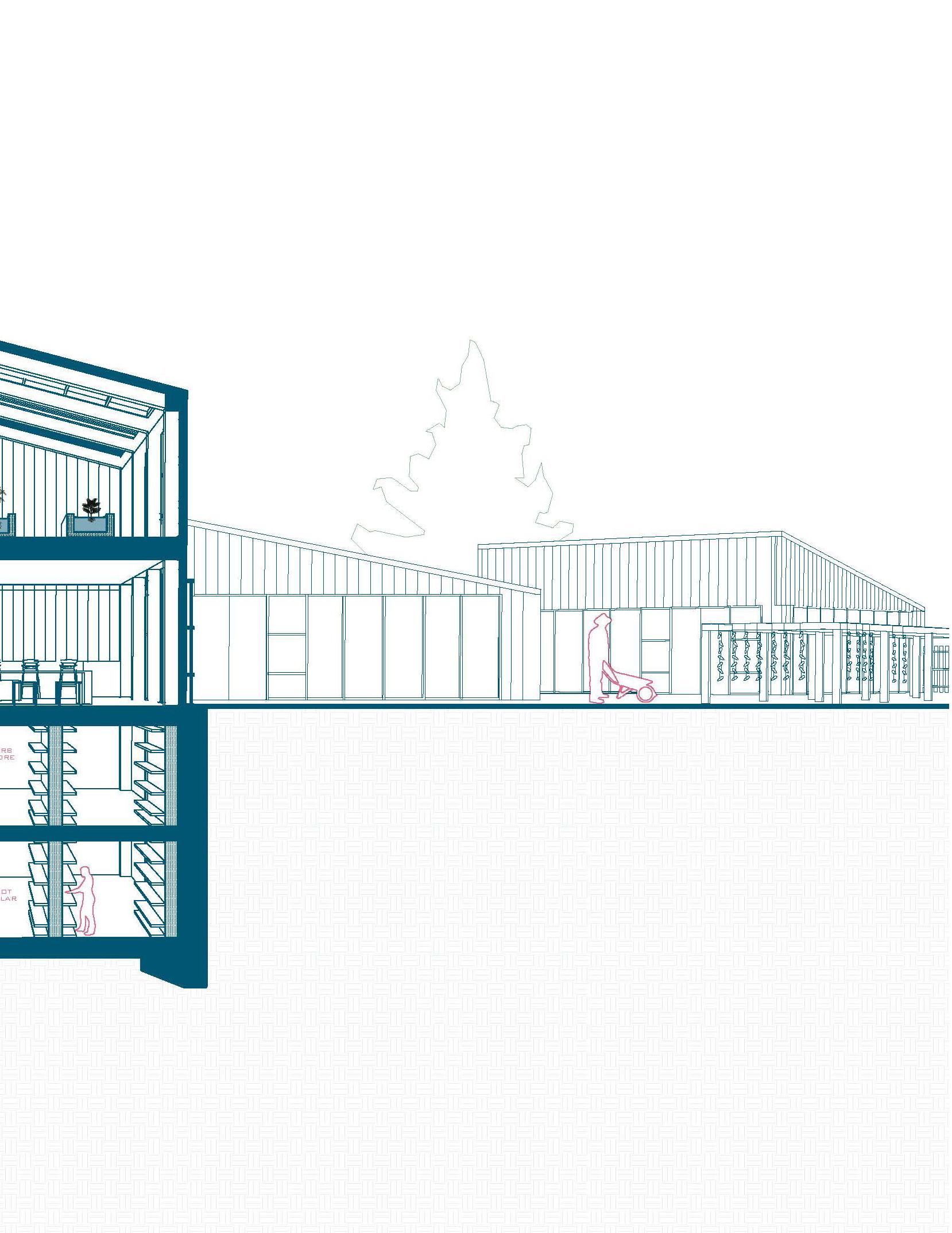
Lifecycle of The BarnYard
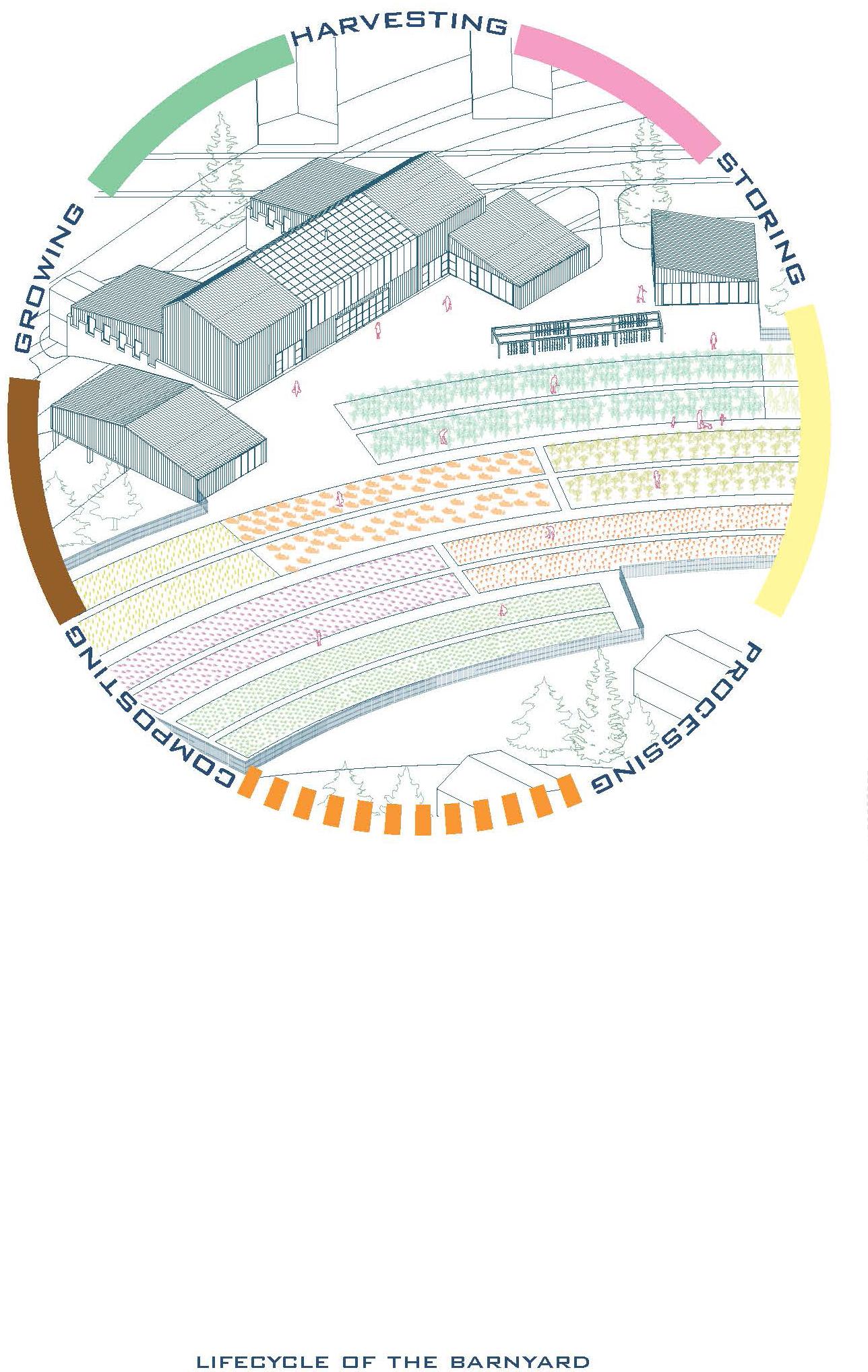
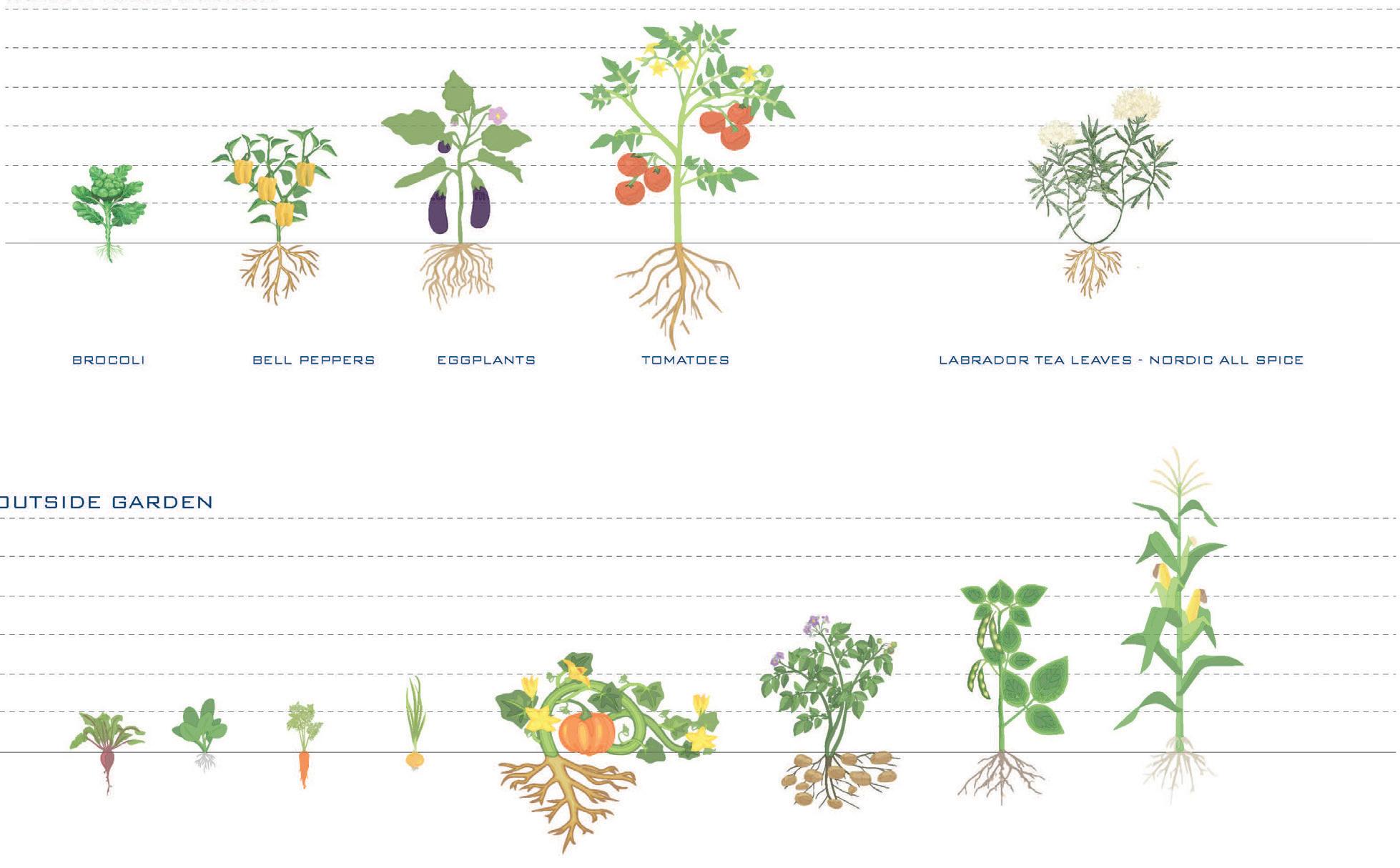
Planting Calender
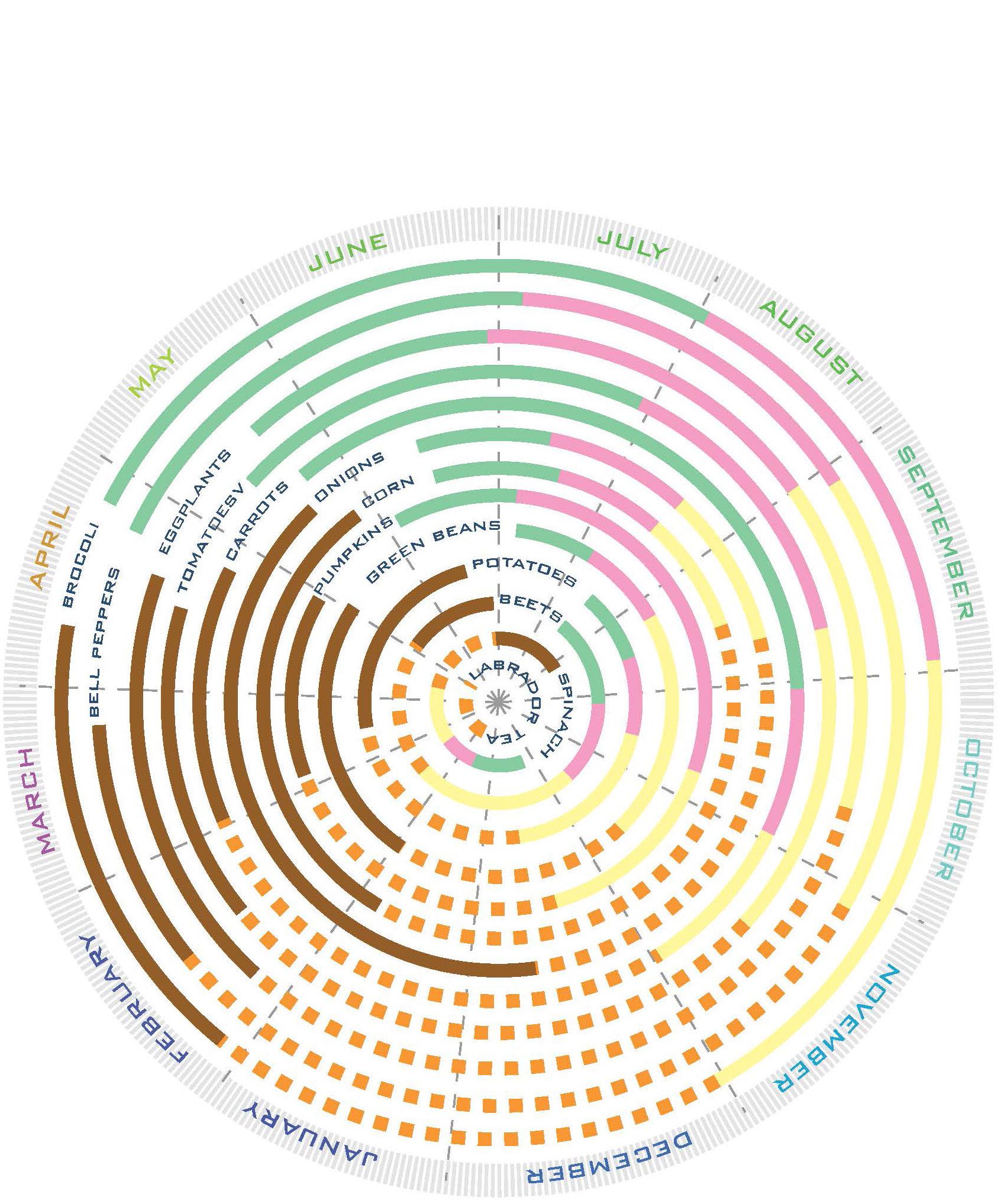
Public Appearance
Location: Los Angeles, CA, USA
Instructor: Elena Manferdini, Professor at SCI-Arc
Scale: 115,200 m2 | Budget: $576,000,000,000
Academic Term: Spring’ 2016
Typology: Federal Courthouse | Occupancy: Assembly Design Concept: Speculative Sci-Fi
Phases: SD, DD | 2GBX Design Studio
Media: AutoCAD 2021, Rhino 5, Keyshot

Goals & Methodology:
Many people suffer for years because of monotonous practice of courthouses.The intention was to break the monotony of its usual practice and create a warmrelationship between public and justice through this new courthouse which will be sited in an undulated site and its four corners has three different height. So the orientation and Shape of the building was derived from different angles of site lines facing all directions. For the grounds, use of fuzzy reflective material was to get the image of the changing society. People get it while in looking and walking as soon as they enter the premise.
Building is enveloped by colorful textured glasses. The purpose of glass surface is to get maximum natural light in entire space. The reason of using colors is that it has always played an important role in the process of human evolution. It’s psychological influence and effects on the surface are aspects of our perceptual judgement system. Colors can speed up our thinking. When Orange, Blue, Beige colors are mixed together on glass surfaces it gives greenish effect to the environment. Which makes the ambience soothing and calm that is essential for a federal building. Also, it gives the new building visual separation from the neighboring gray buildings of the city.
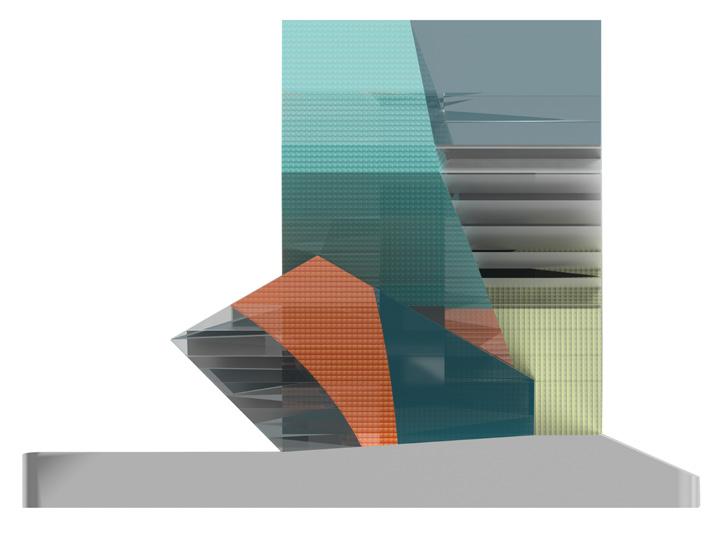
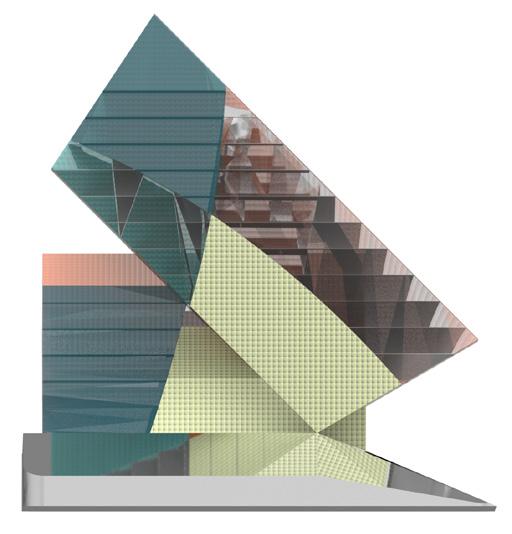
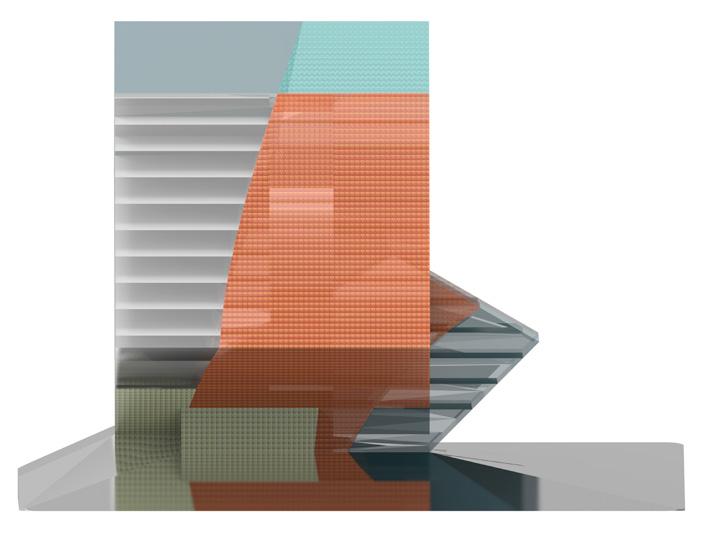
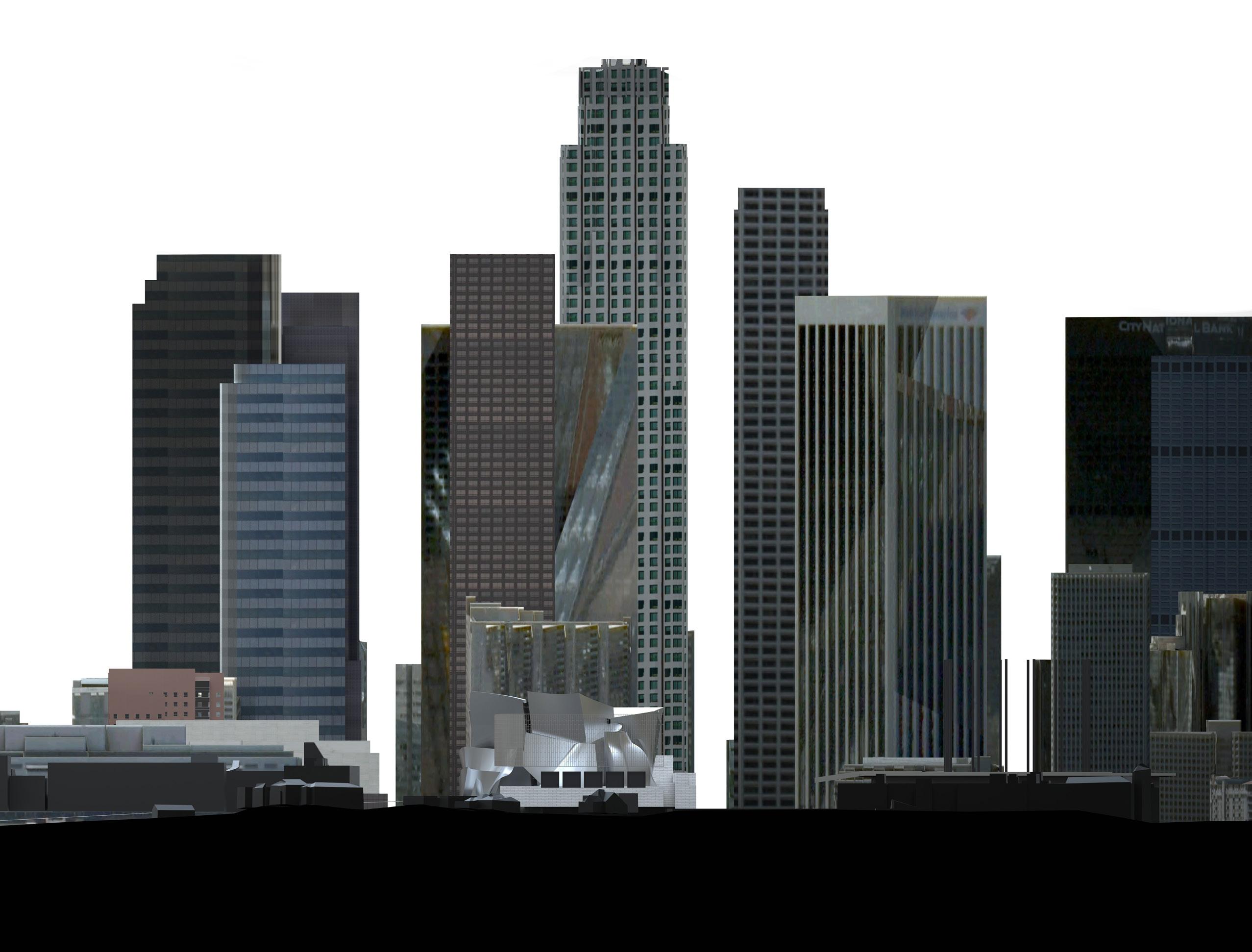
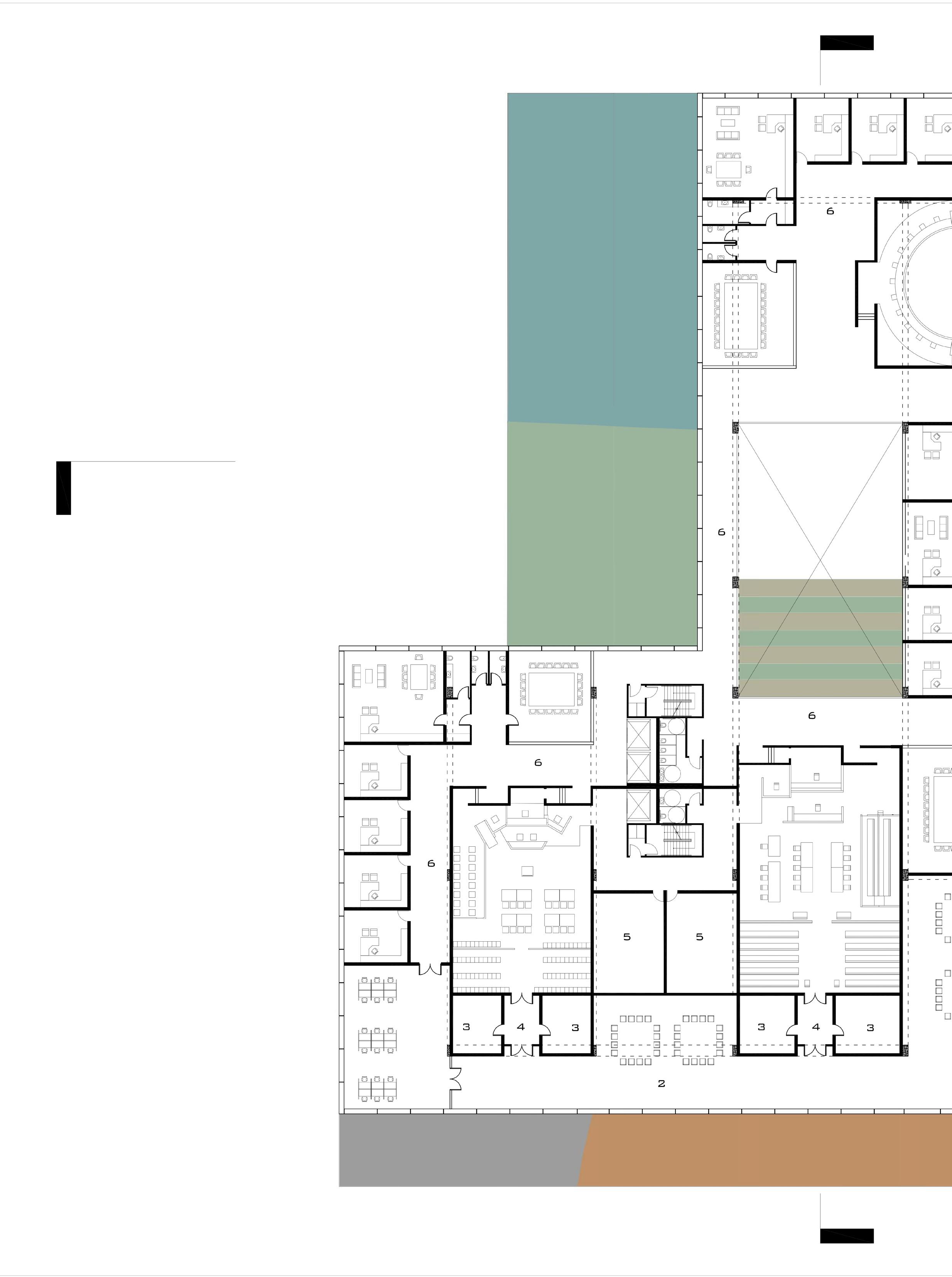

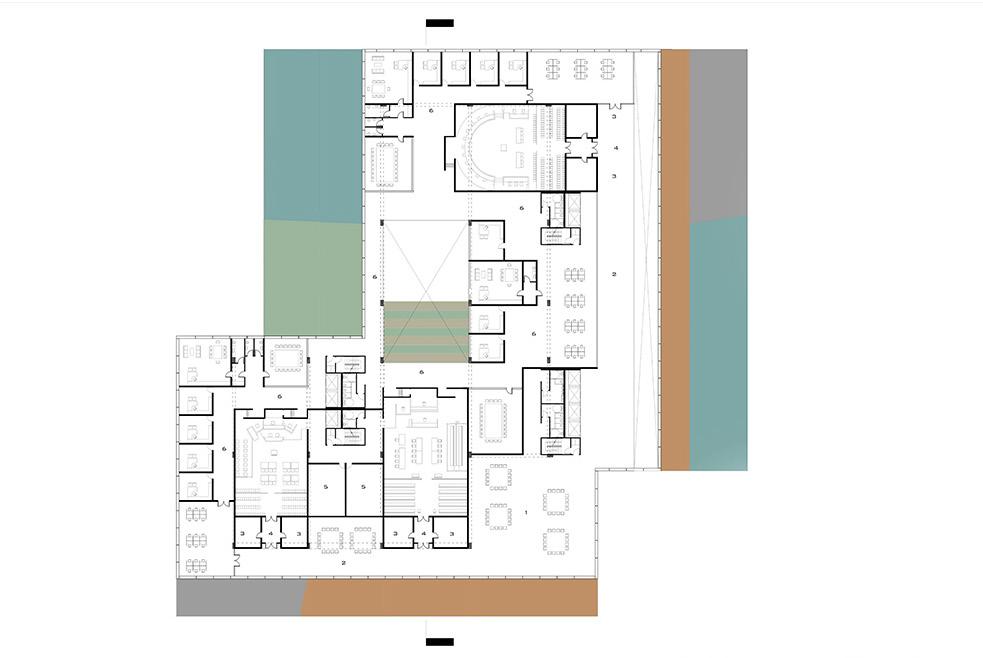
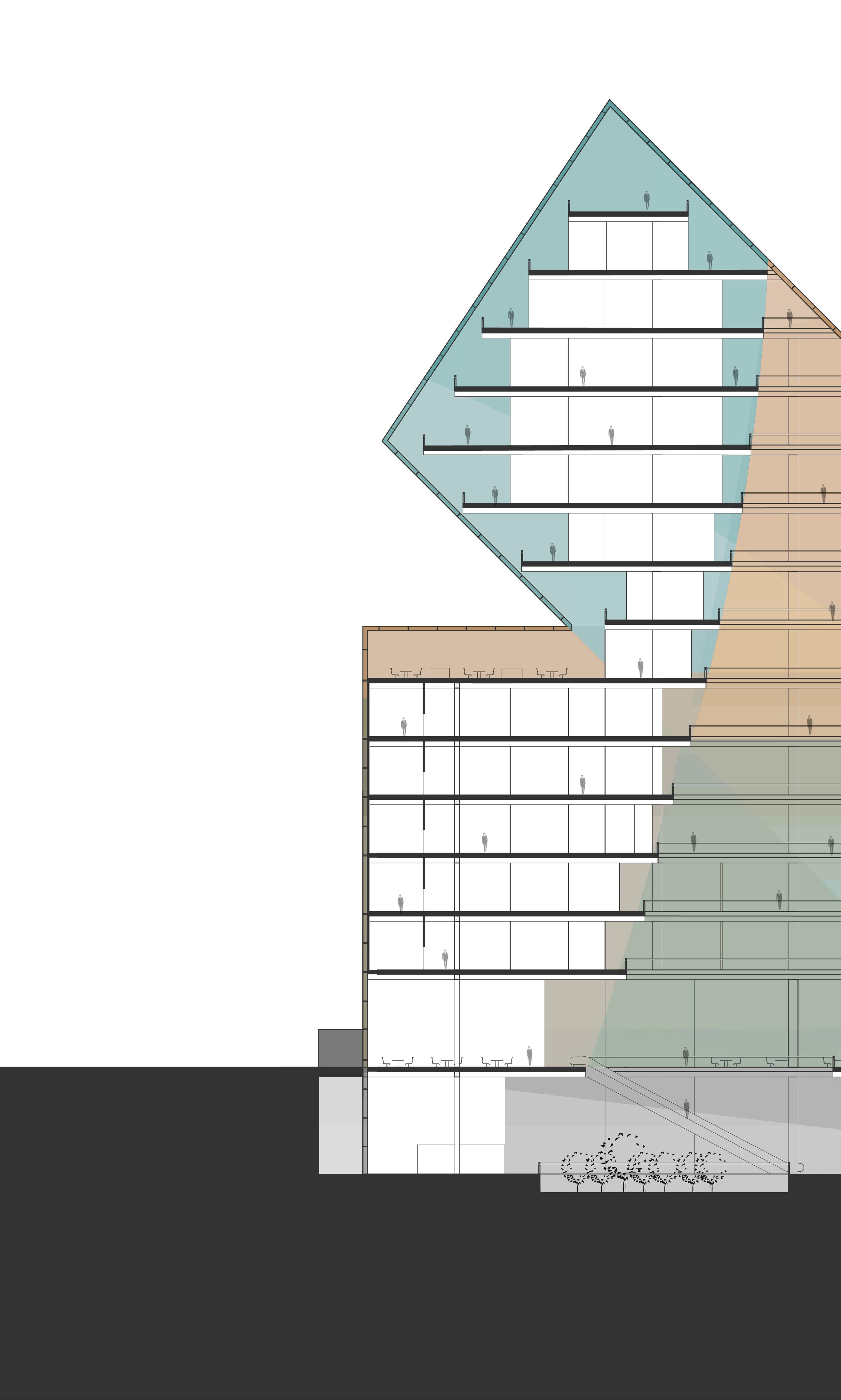
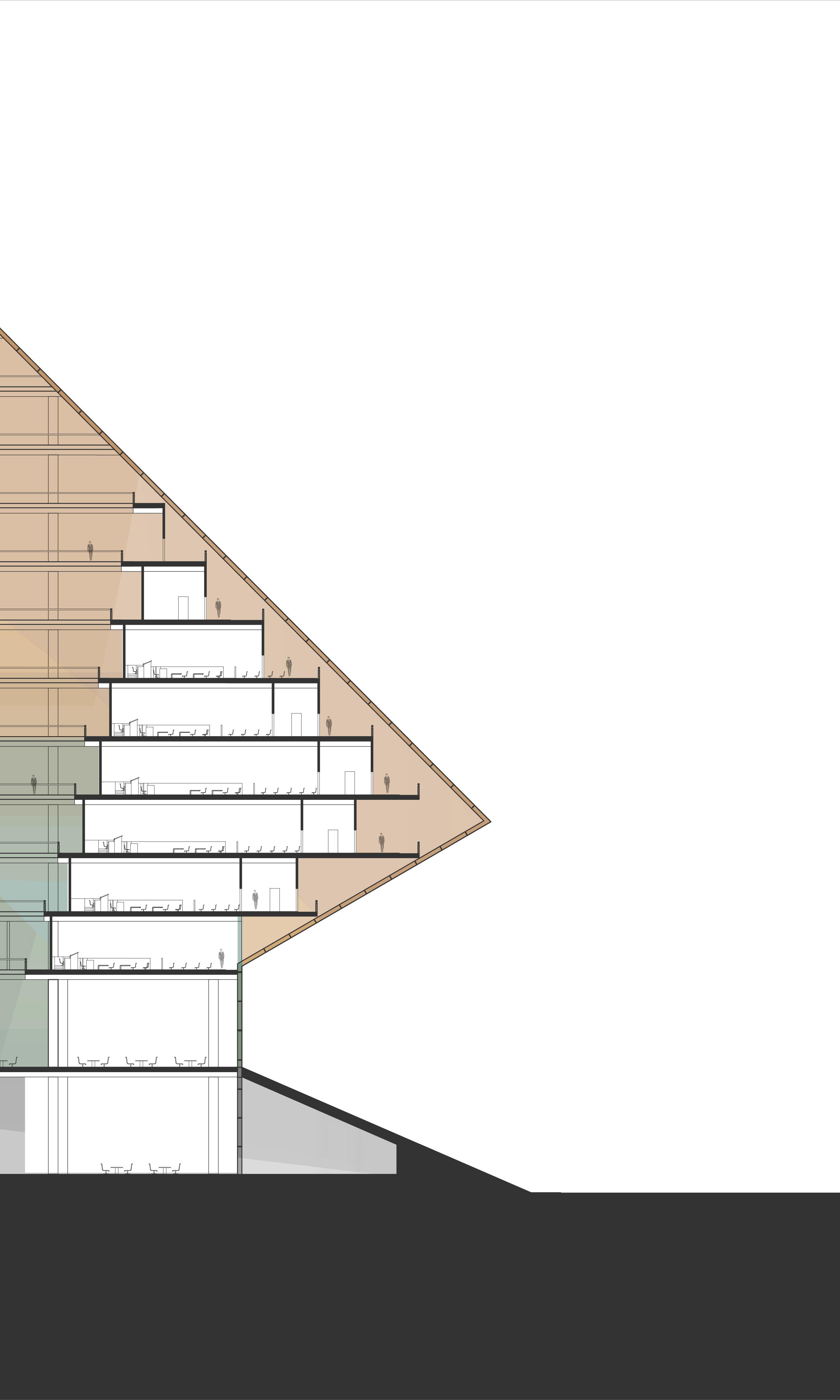
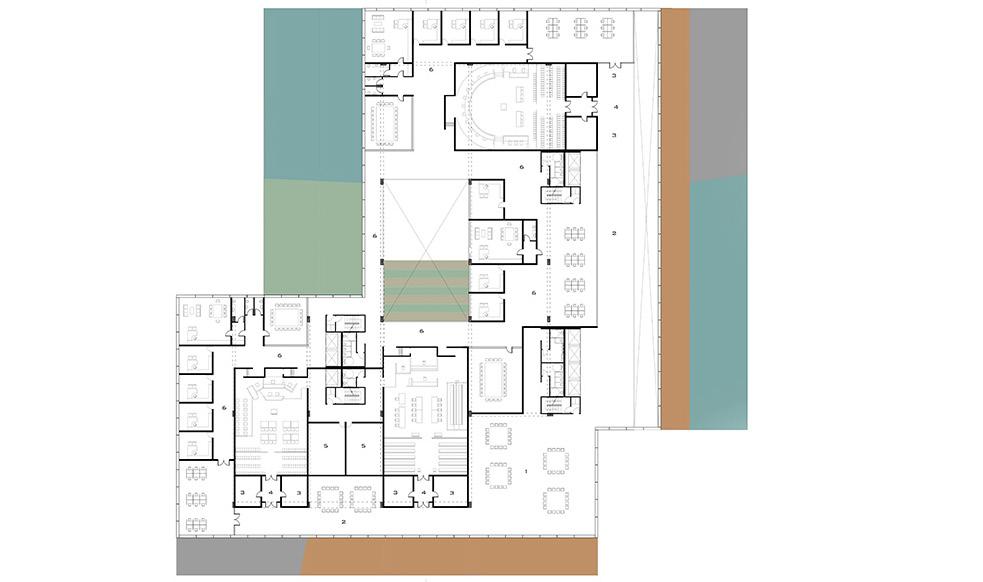
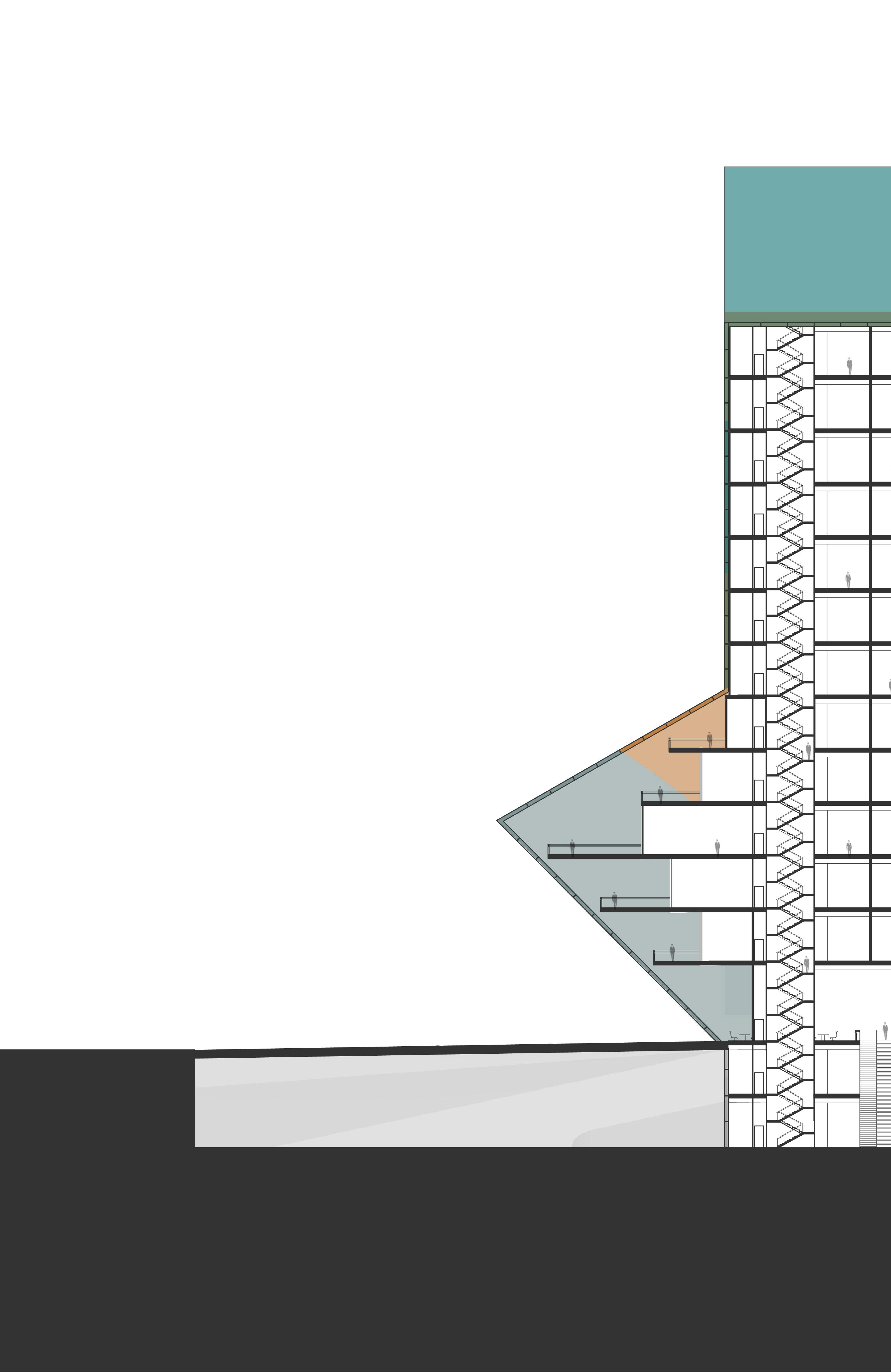
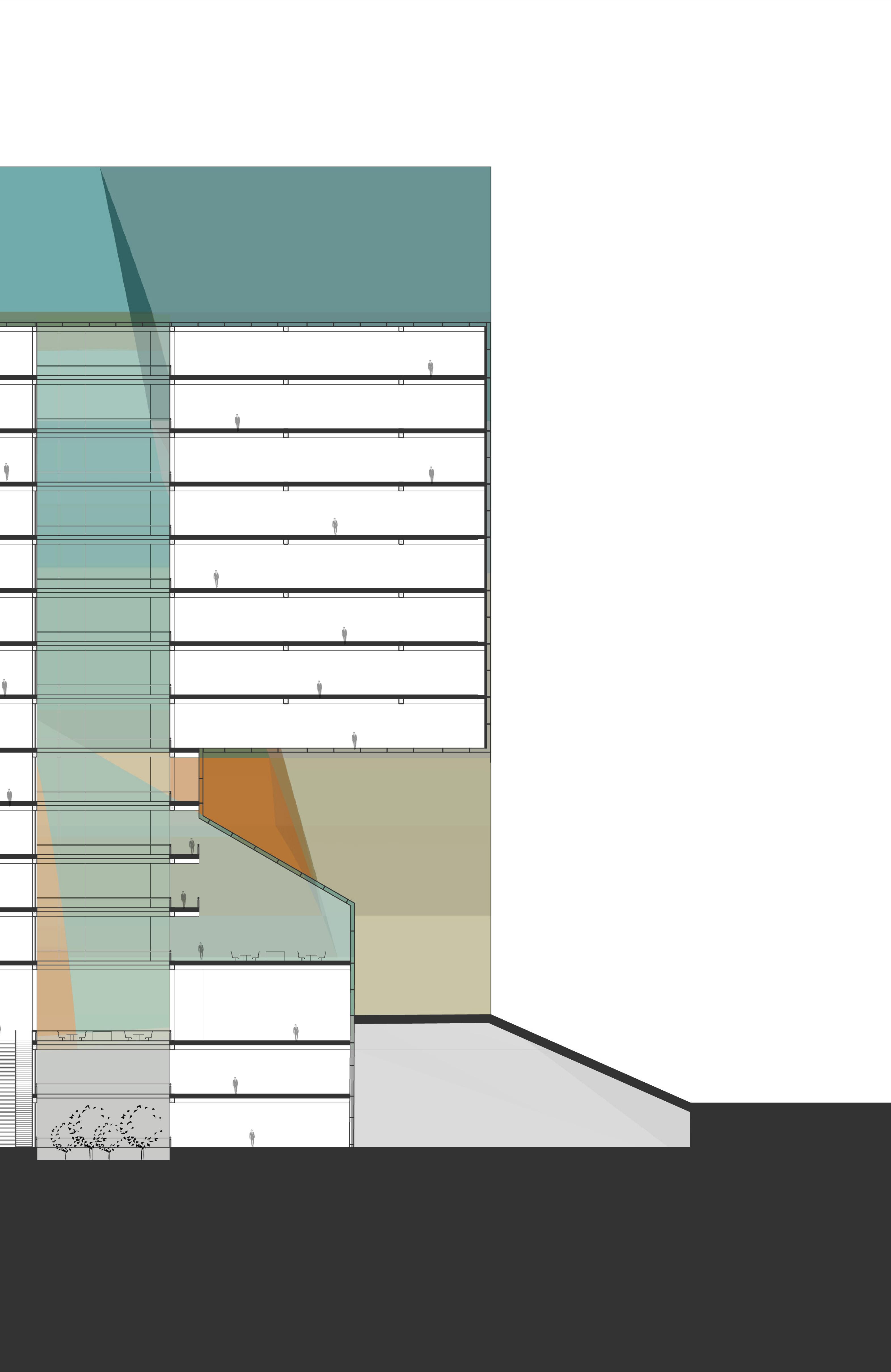
Annex to the Bibilotheque
Location: Paris, France
Instructor: Florencial Pita, Professor at SCI-Arc | Team-mate: Kun Wang
Scale: 1,176 m2 | Budget: $15,000,000
Academic Term: Fall’ 2015
Typology: Federal Courthouse | Occupancy: Assembly
Design Concept: Speculative Sci-Fi
Phases: SD, Project Narration & Coordination | 2GAX Design Studio
Media: Rhino 5, 3D Coat, 3D Maya, Adobe Suite
Goals & Methodology:
Set at the corner of Rue Valette and Place du Panthéon in Paris, the Annex to the Bibliothèque Sainte-Geneviève explores speculative interventions within a rich historical context.
The design draws inspiration from site-specific elements, merging references such as façade textures, colors, and shadows with abstract forms derived from photographs of a candy jar. This juxtaposition creates a unique architectural identity:
Form and Texture: The building’s sharp curvature profile reflects the candy jar’s shape, while its textures incorporate details of windows and neighboring façades, blending seamlessly into the urban fabric.
Integration with Context: Solids and voids are scaled to complement the surrounding architecture, with corners cut to fit the site and openings designed to echo Parisian aesthetics.
Abstract Aesthetics: Vertical and horizontal mullion lines, along with textured façade openings, reinterpret traditional Parisian architectural elements through a contemporary lens.
This speculative project balances abstraction and heritage, offering a provocative vision of how public architecture can engage with history and context.

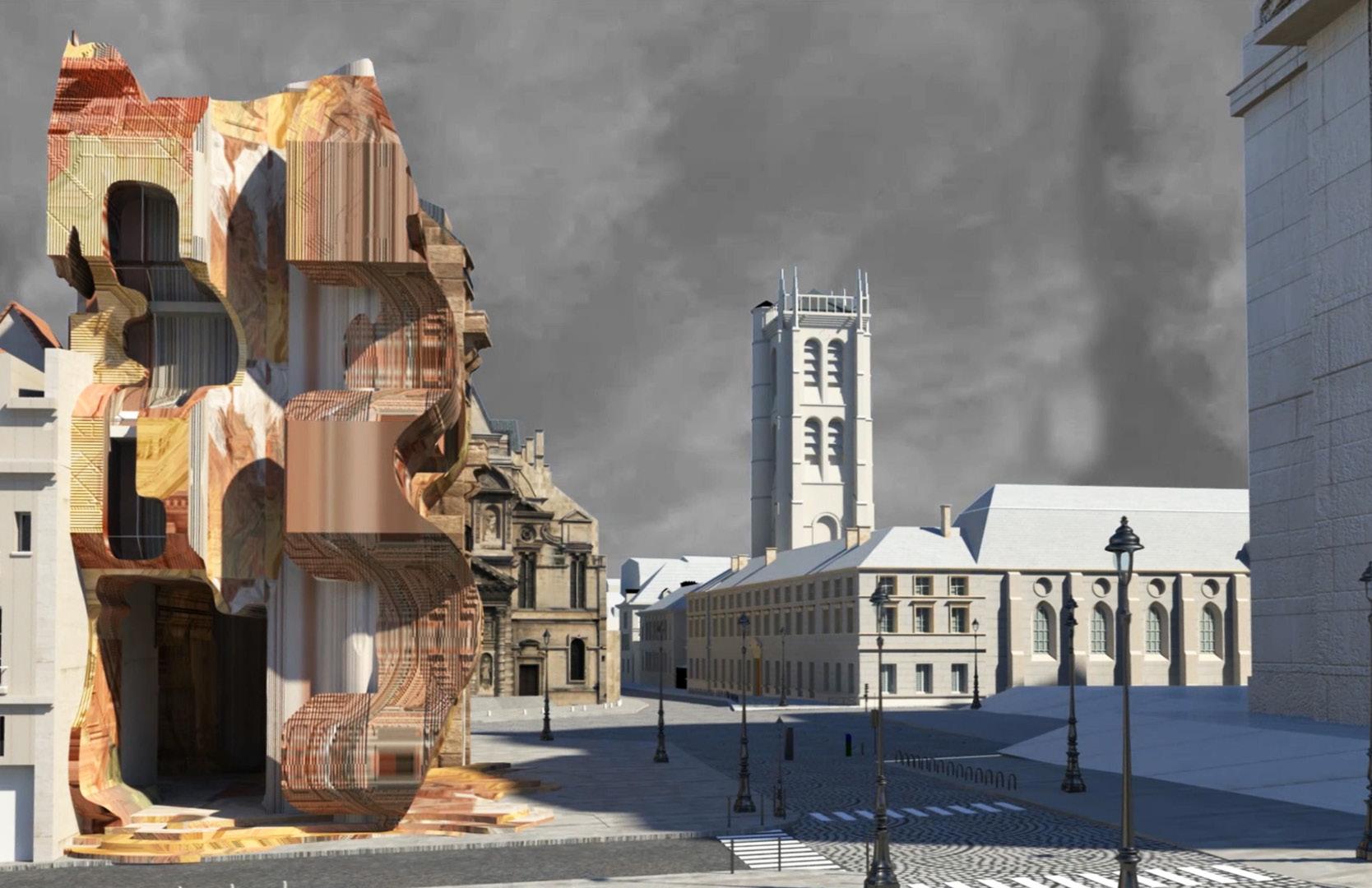
1 Bibliothèque Sainte-Geneviève Library
2 Church of Saint-Étienne-du-Mont from 15th entury
3 Lycée Henri-IV
4 Panthéon - Colonaded Neoclassical Mausoleum
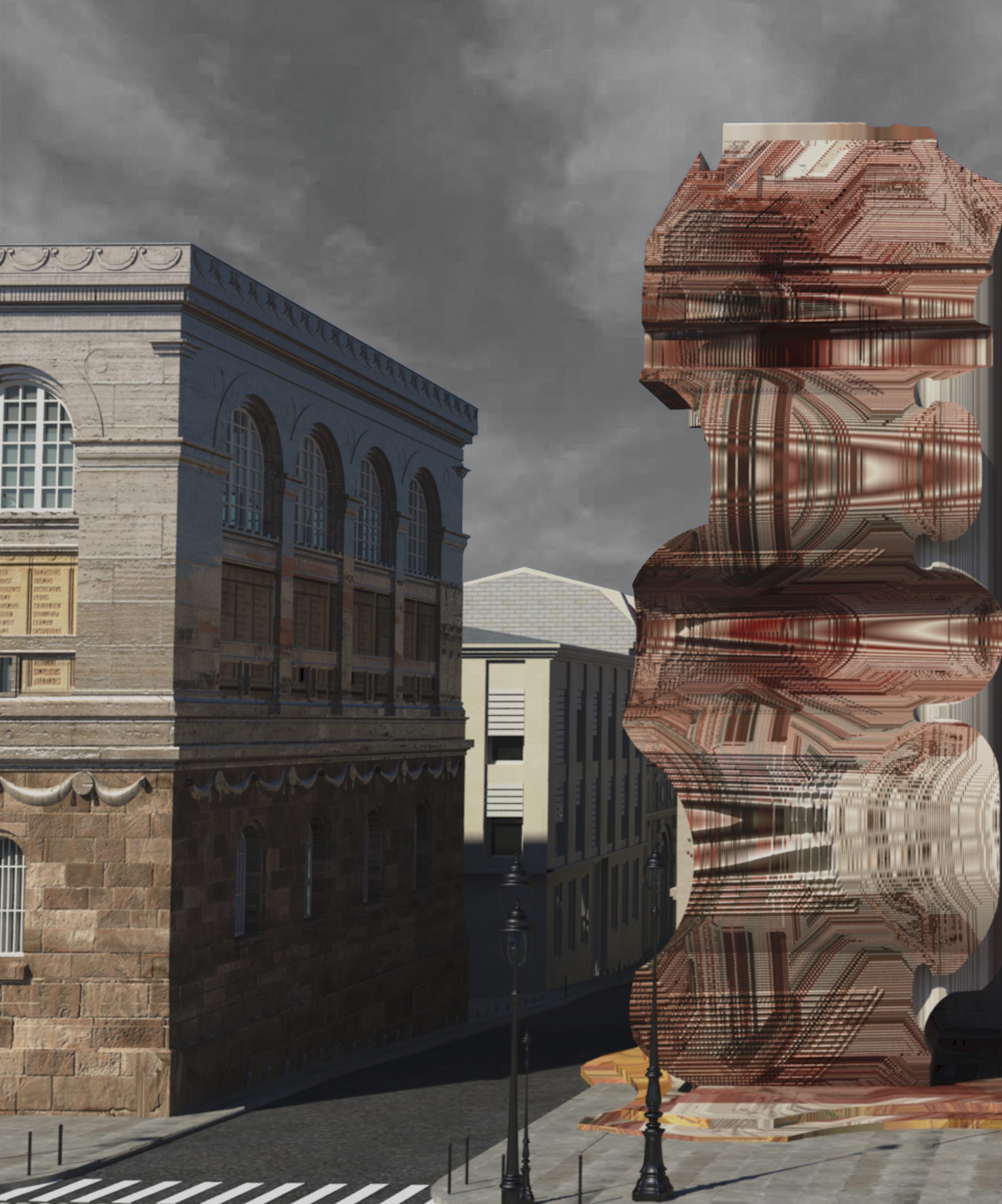

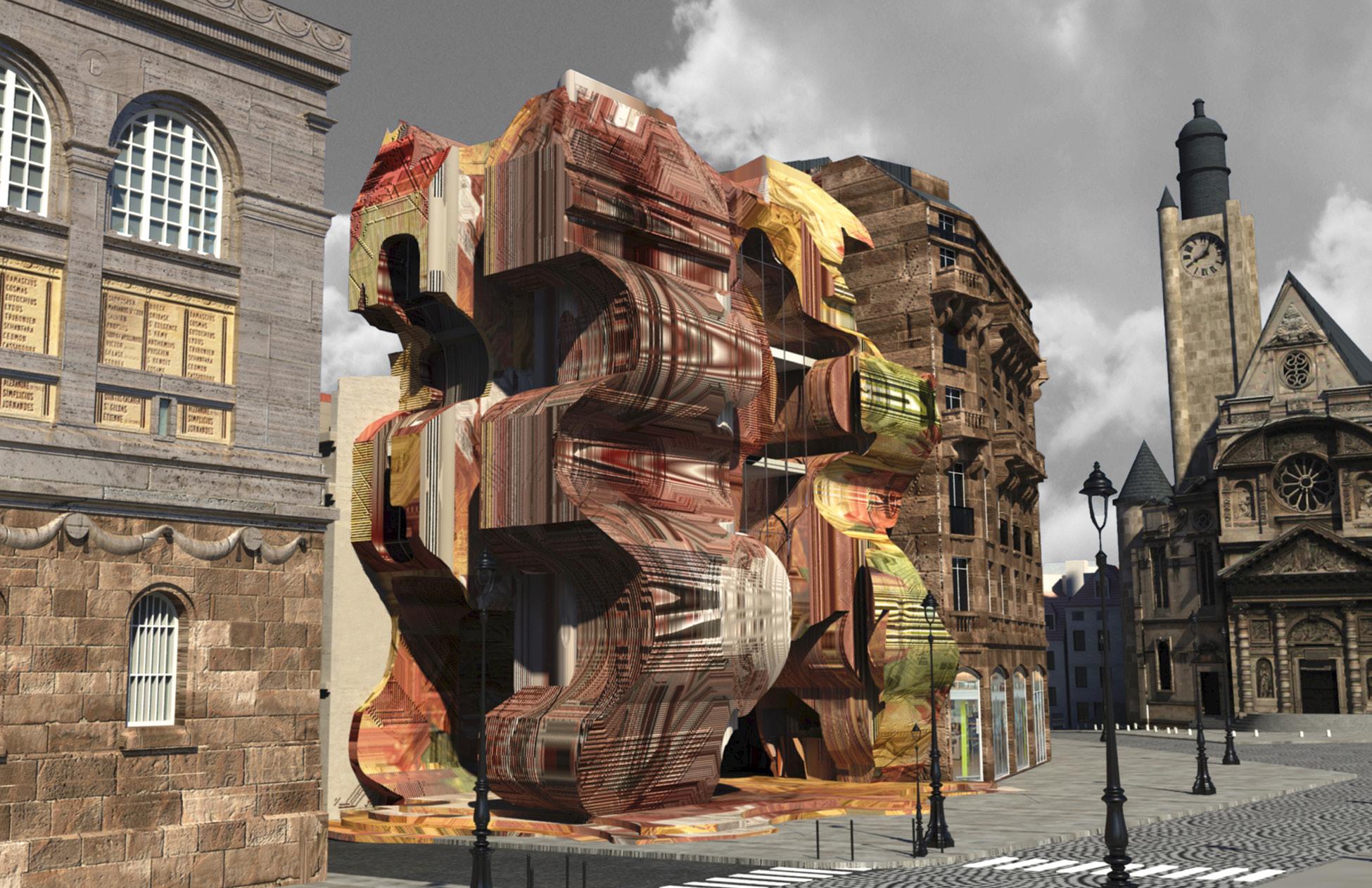
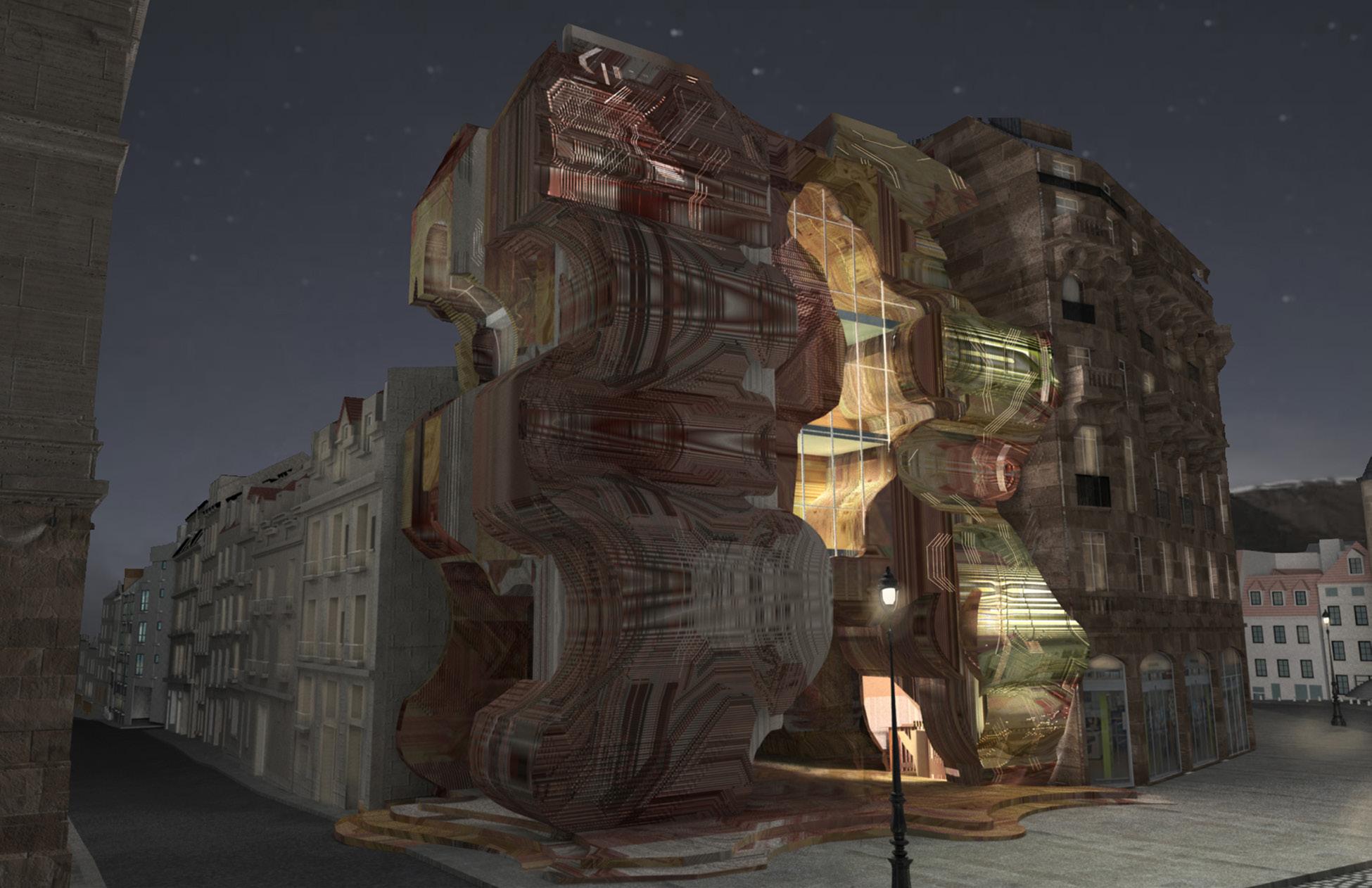
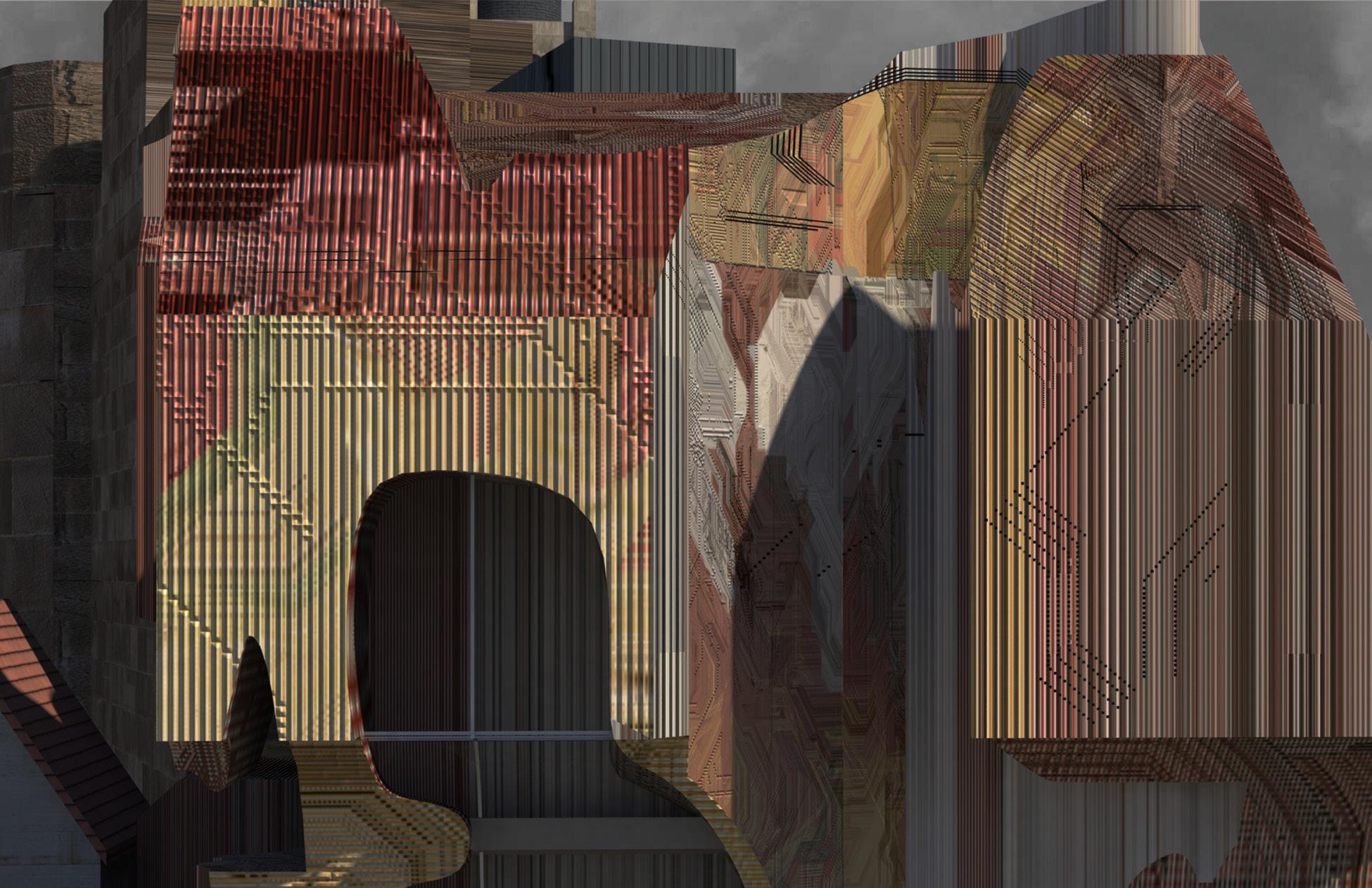
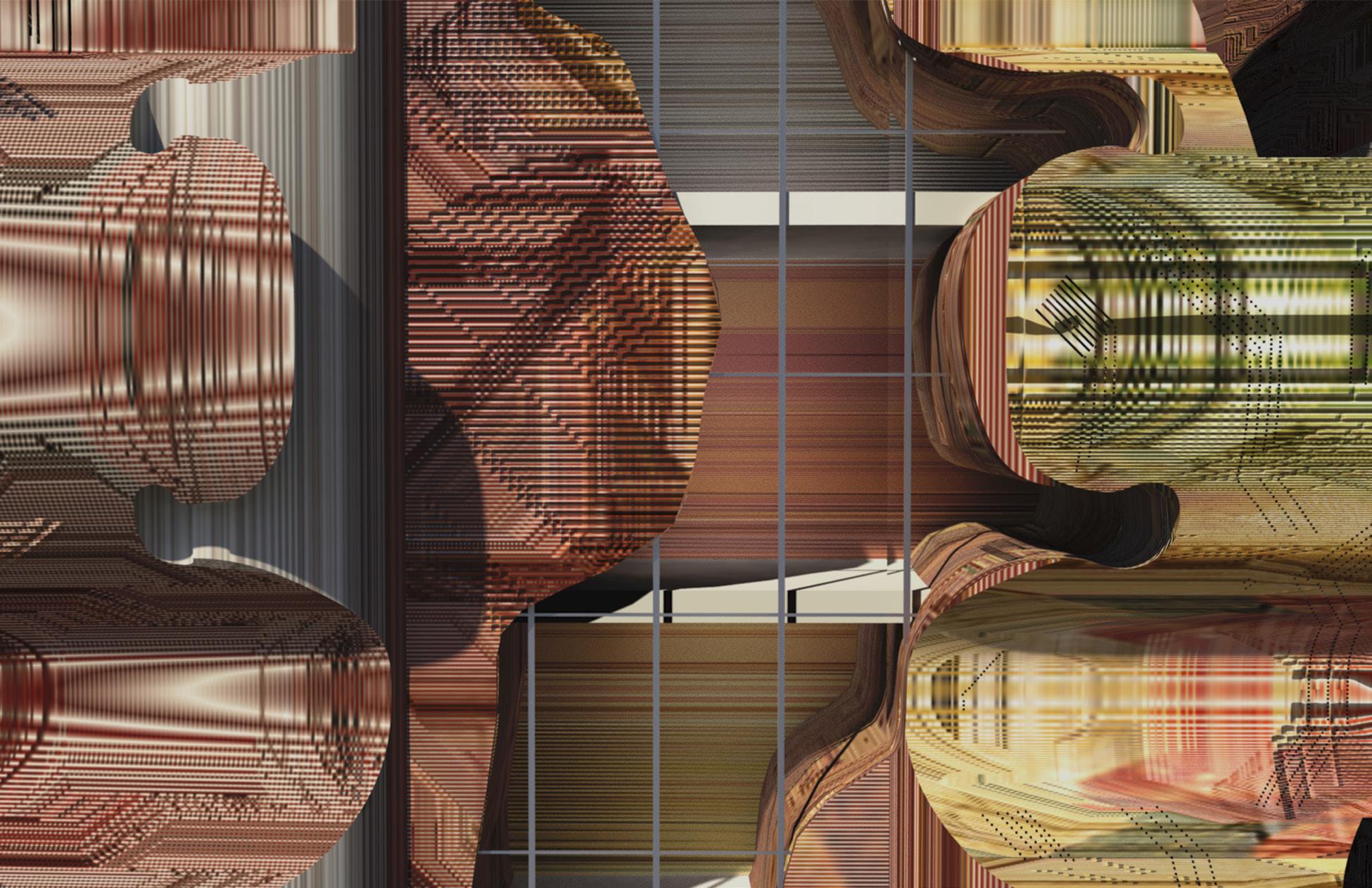
Thank you for exploring my portfolio. I look forward to contributing my skills, creativity, and passion to impactful architectural collaborations.
